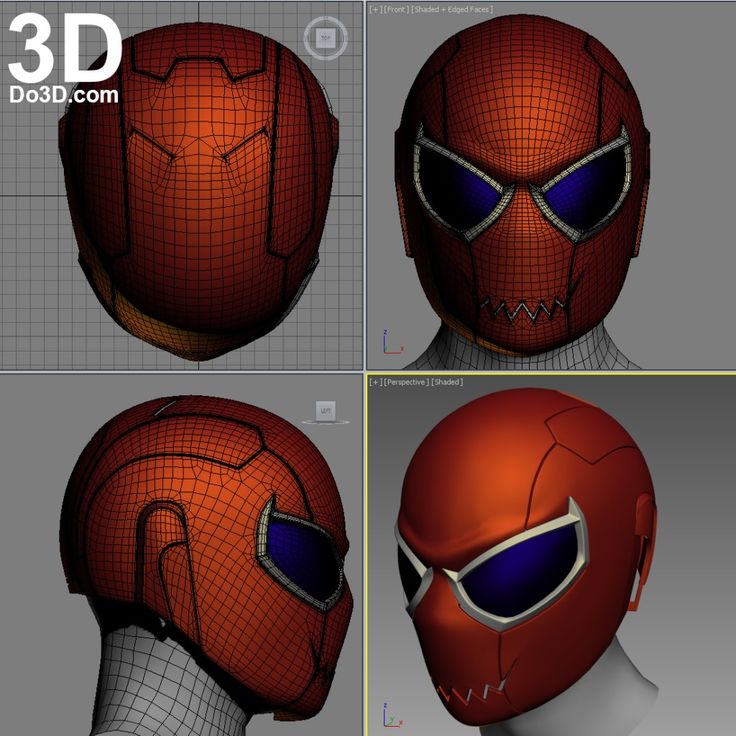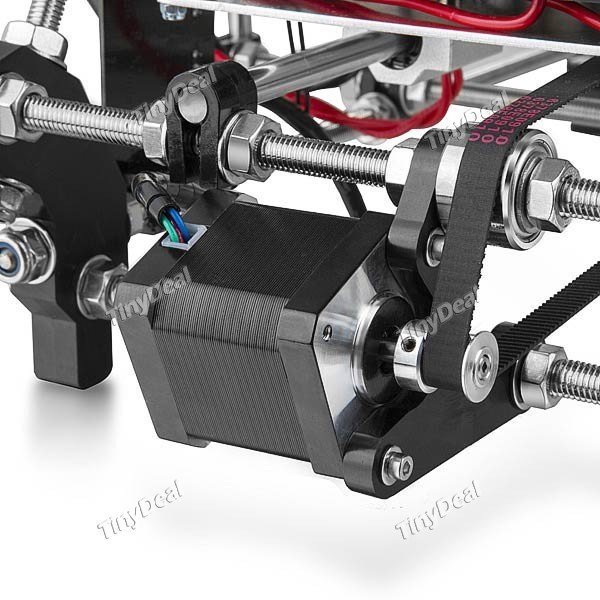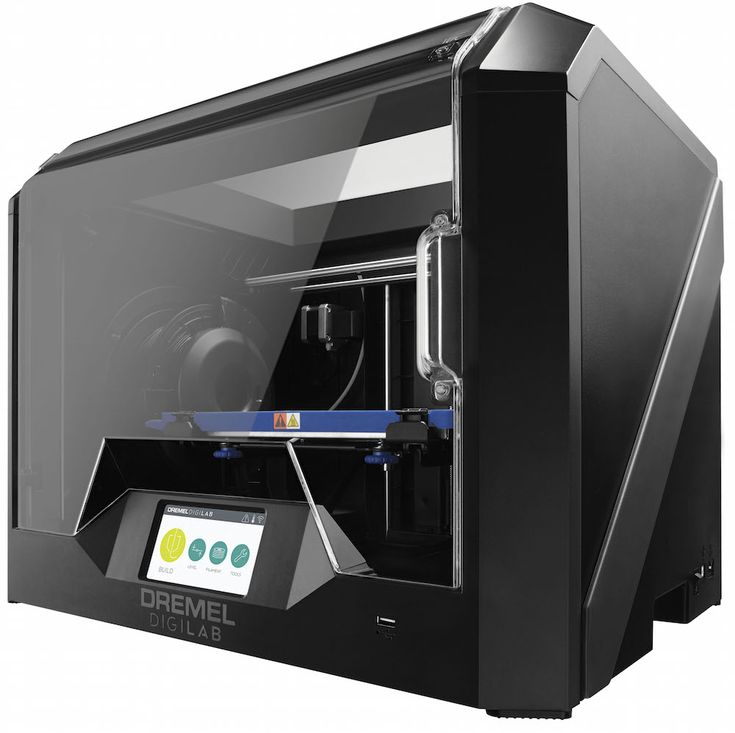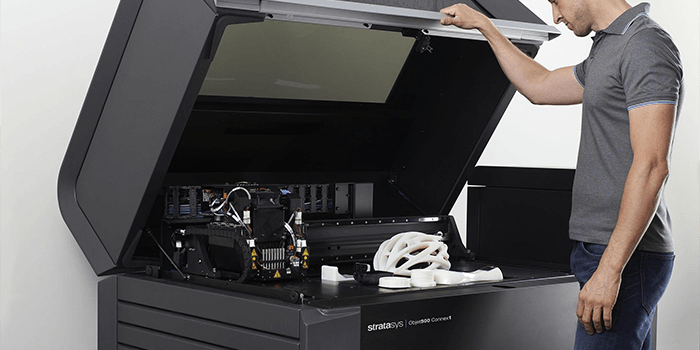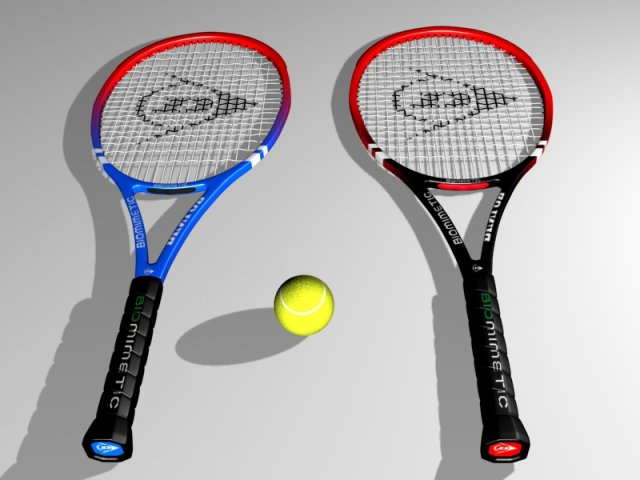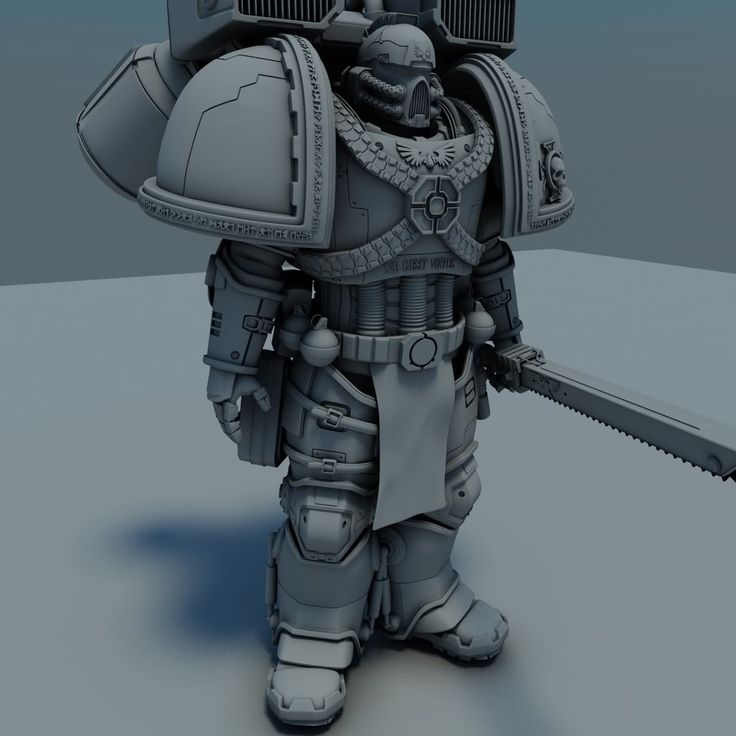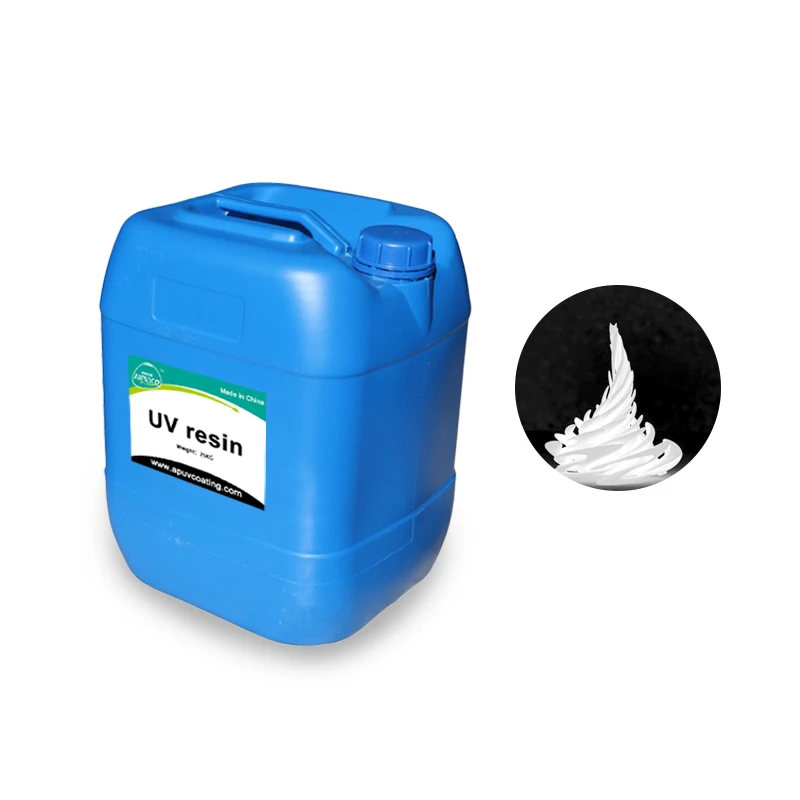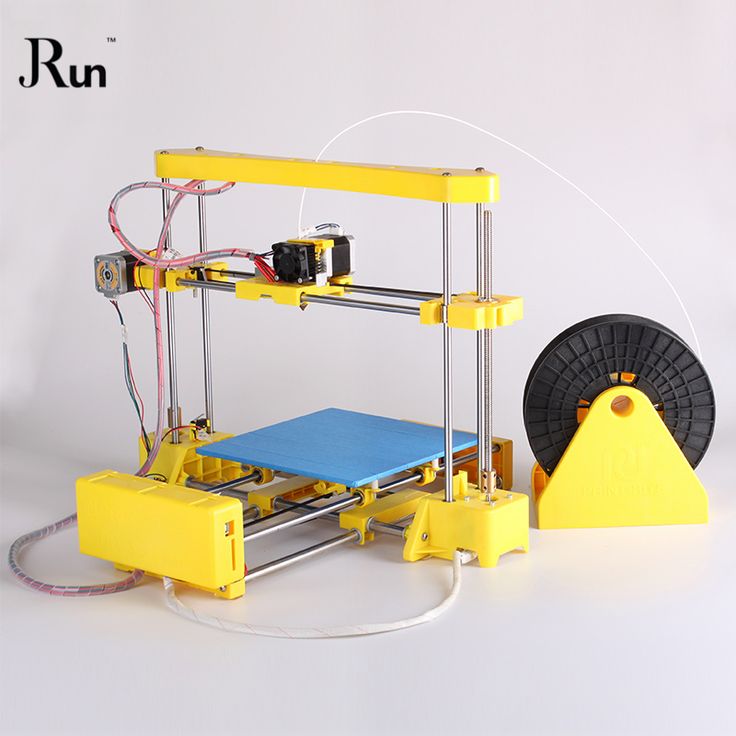Highest accuracy 3d printer
8 Best High Resolution 3D Printers (2022 Updated)
- Last Updated On November 1, 2022
- Pat Nathaniel
When looking for a 3D printer, you look at features like build volume, extruder type, nozzle, build plate to suss out the best.
But in the end, if we’re honest, all we want are picture-perfect prints printed quickly.
And that’s what this article highlights: the best FDM and resin 3D printers that produce the highest resolution prints in the shortest amount of time.
Elegoo Mars 2 Pro
Get Discount Now
Check Latest Price
Creality Ender 3 V2
Get Discount Now
Check Latest Price
Ultimaker S5
Check Latest Price
Table of Contents
- The Best High Resolution 3D Printers (FDM)
- The Best High Resolution 3D Printers (SLA/Resin)
- FDM 3D Printers:
- 1.
Creality Ender 3 V2 (Best Choice)
- 2. Prusa I3 MK3S (Best for Beginners to Advanced Users)
- 3. Dremel DigiLab 3D45 (Best for Education)
- 4. Ultimaker S5 (Premium Choice)
- 1.
- SLA/Resin 3D Printers:
- 5. Elegoo Mars 2 Pro (Best Value)
- 6. Phrozen Sonic Mini 4K (Beginner Friendly)
- 7. Anycubic Photon Mono X
- 8. Formlabs Form 3 (Most Accurate 3D Printer)
- What is Resolution in 3D Printing? X, Y, and Z Resolution
- Other Factors That Affect Print Quality
- Material
- Printer Stability
- Type of Printing
- Temperature
- Slicer settings
- Nozzle size
- When Do High-Quality 3D Printers Make the Most Difference?
- Advantages and Disadvantages for High Resolution 3D Printers
- Advantages
- Disadvantages
- SLA VS FDM
The Best High Resolution 3D Printers (FDM)
1. Creality Ender 3 V2 (Best Choice)
2. Prusa i3 MK3S (Best for Beginners to Advanced Users)
Prusa i3 MK3S (Best for Beginners to Advanced Users)
3. Dremel DigiLab 3D45 (Best for Education)
4. Ultimaker S5 (Premium Choice)
The Best High Resolution 3D Printers (SLA/Resin)
5. Elegoo Mars 2 Pro (Best Value)
6. Phrozen Sonic Mini 4K (Beginner Friendly)
7. Anycubic Photon Mono X (Best for Large Build Volume)
8. Formlabs Form 3 (Most Accurate 3D Printer)
FDM 3D Printers:
1. Creality Ender 3 V2 (Best Choice)3D Printer Type: FDM | Materials: PLA, ABS, TPU & PETG| Build Volume: 220 x 220 x 250 mm
Cheap. Capable. Efficient. The Creality Ender 3 series is a 3D printing staple. And the upgraded Ender 3 V2 is one of the best budget printers, capable of churning out high-resolution prints.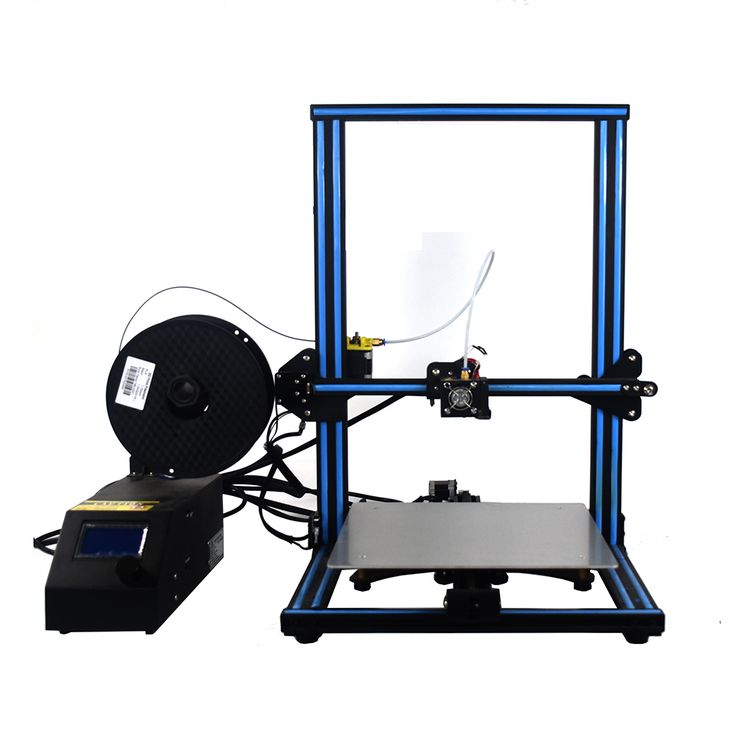
This world-class budget machine (yes, I used world-class and budget in the same sentence – the 3D printer is a delightful paradox) is perfect for newcomers. Once you buy this printer, you don’t need to purchase any other printer because this machine handles it all.
Stuck setting up your printer? Printing issues chipping away your happiness? Then Creality’s vast user base would be happy to solve the problem for you. The official community can be found on this site. There are plenty of Facebook groups as well.
Silent stepper motor drivers and a 32-bit mainboard are just some ways the V2 leveled up over its older brother, the original Ender 3 model.
The Bowden extruder in the V2 performs an admirable job of creating fantastic prints. The print resolution in the XY-axis and the Z-axis is 0.1mm.
The Ender 3 V2 comes with rare features at this price point, like a filament runout sensor and resume-printing option during a power cut. Coupled with a large build volume of 220 x 220 x 250 mm, it’s hard to find fault with this printer.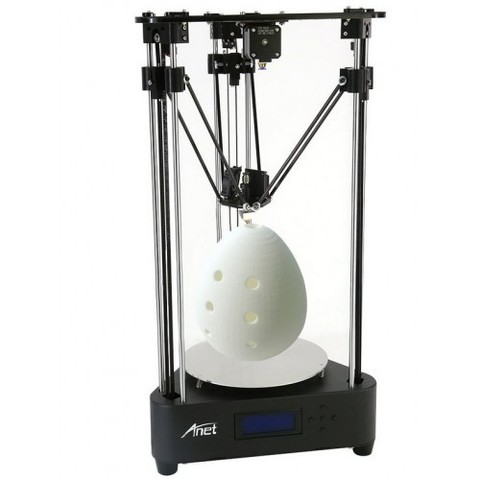
But alas, faults it does have. For instance, loading the filament into the Ender V2 was irksome. This was an issue we faced with the Ender 3 as well. And this high accuracy 3D printer requires assembly.
Don’t let the minor nitpick dissuade you, however. The Ender 3 is the best budget high resolution 3D printer.
- Produces amazing prints affordably
- Large community for support
- Filament loading is annoying
- Not plug and play
Get Discount on Creality3D
Check Latest Price
2.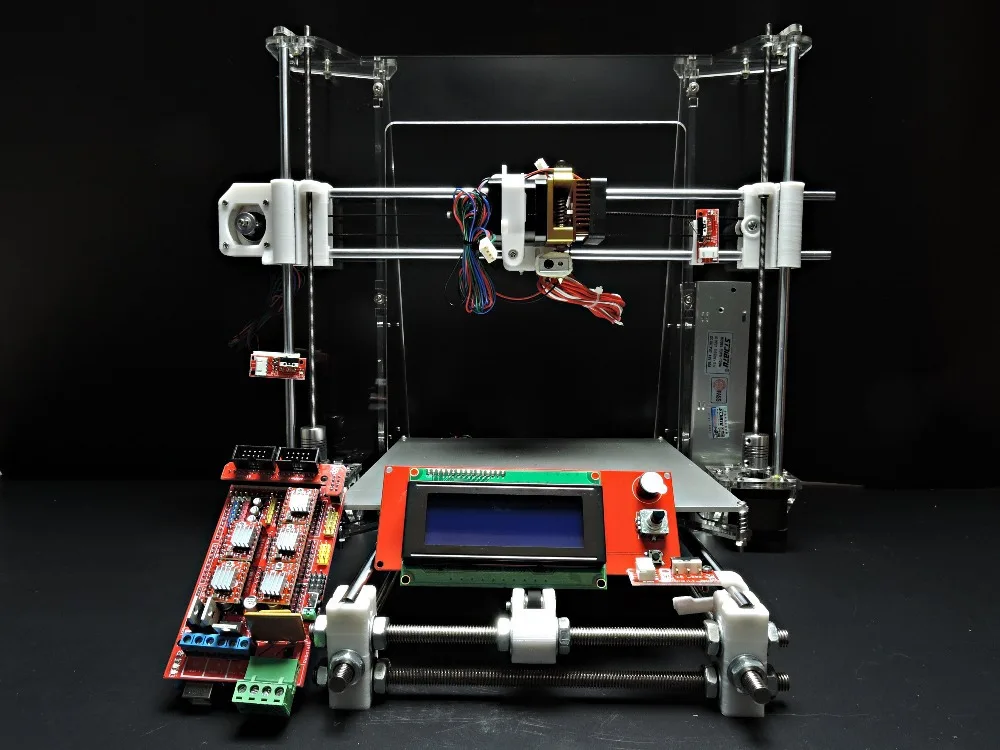 Prusa I3 MK3S (Best for Beginners to Advanced Users)
Prusa I3 MK3S (Best for Beginners to Advanced Users) 3D Printer Type: FDM | Materials: PLA, ABS, PET, HIPS, Flex PP, Ninjaflex, Laywood, Laybrick, Nylon, Bamboofill, Bronzefill, ASA, T-Glase, Carbon-Fibers Enhanced Filaments & Polycarbonate | Build Volume: 250 x 210 x 210 mm
The Prusa i3 MK3S, a 3D printing heavyweight, is expensive. But you get what you pay for – the printer over-delivers in terms of quality.
The printer setup can be challenging, but the gorgeous and detailed handbook shipped with the printer holds you by your hand and guides you meticulously through the whole process.
Shipped with the 3D printer are premium components like a magnetic PEI coated steel spring heated bed and a custom E3D V6 hot end.
There are two types of software included – one for beginners and the other for professionals. If you’re a beginner then you should use the Prusa Control software; you’ll find all the necessary things needed to build your prints.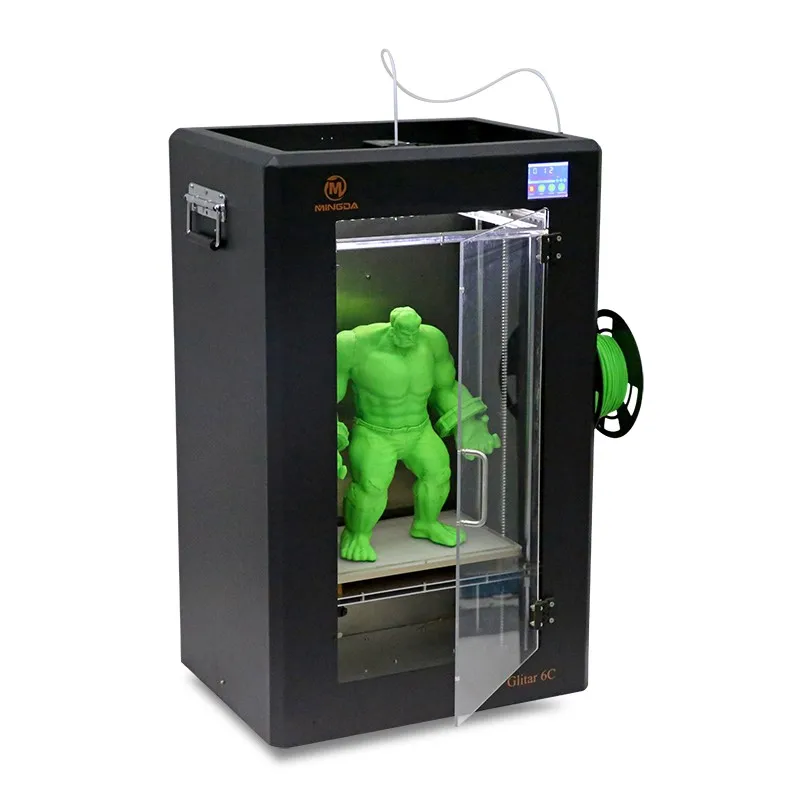 However, this mode lacks a vase mode.
However, this mode lacks a vase mode.
For more complex prints, advanced users should use the Prusa3D Slic3r MK3, which has a lot more functionality.
For high-resolution prints, it’s necessary to dampen vibrations during printing. The sturdy aluminum frame of the printer stops any shaking with ease, leading to better prints.
The machine handles whatever you throw at it without breaking a sweat. The layer resolution is 0.05 mm, and the print quality is better than most other printers in the market. Take a magnifying glass or a microscope, you’d be hard pressed to find flaws in the prints.
Another impressive characteristic of the Prusa is its incredibly fast printing speed of 200mm/s. Few FDM 3D printers can print so fast.
The Prusa I3 MK3S is a brand that never disappoints and delivers on all fronts.
- High-res printing
- Incredible speed for an FDM printer
- Quiet
- Expensive
Check Latest Price
3.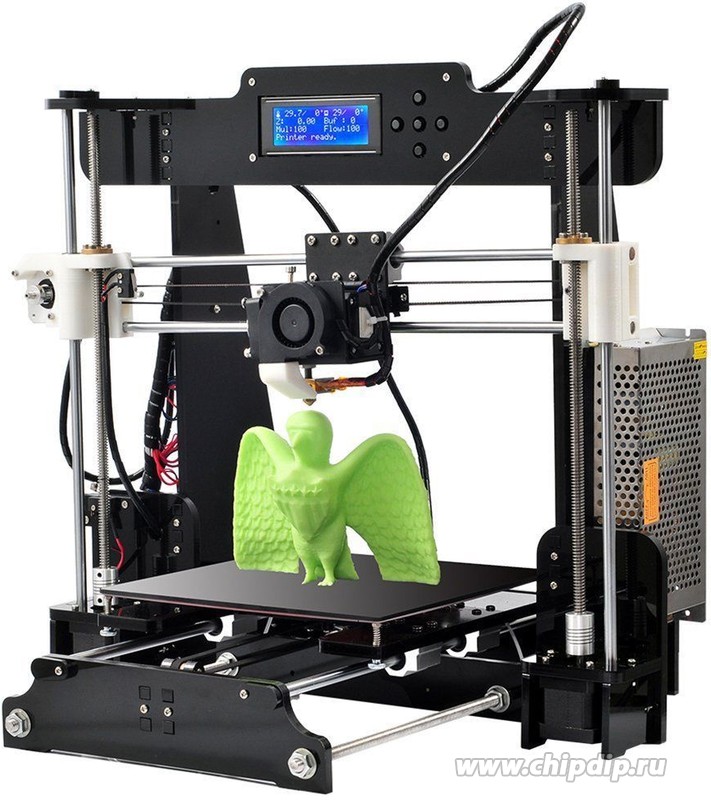 Dremel DigiLab 3D45 (Best for Education)
Dremel DigiLab 3D45 (Best for Education) 3D Printer Type: FDM | Materials: PLA, ECO ABS, PETG & Nylon | Build Volume: 254 x 152 x 170 mm
The Prusa got you excited, and now you want more premium 3D printers to ogle at before you take your pick? Then take a look at the Dremel DigiLab 3D45; it gives Prusa a run for its money.
Large prints can be printed with ease with its large build volume of 254 x 152 x 170 mm. In addition, The DigiLab Slicer software uses the open-source Cura platform, which is suitable for both beginners and advanced users.
One of DigiLab’s unique features is its ability to handle filaments that most 3D printers can’t, like polycarbonate, Nylon, and EcoABS.
The 3D printer is perfect for classrooms. In fact, it comes with a curriculum meant for students from elementary to university levels. Students can easily use the printer as the machine was designed for learning.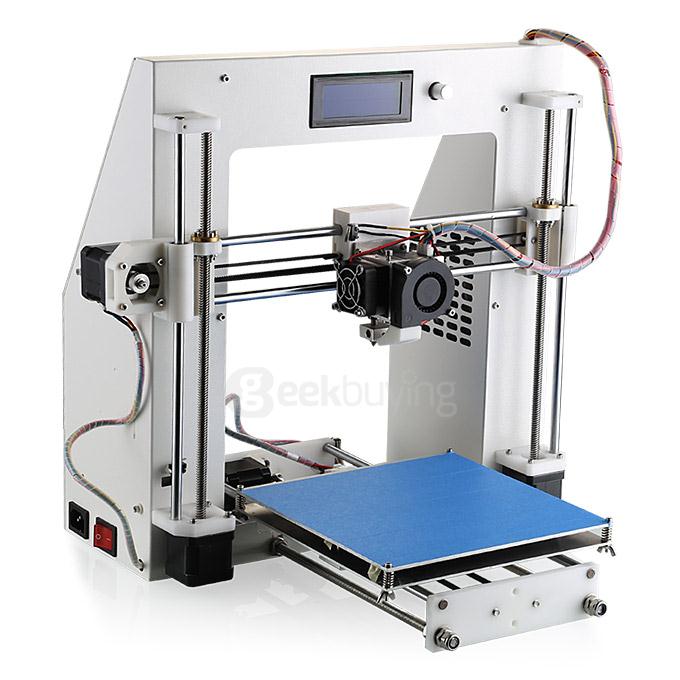
The DigiLab is safe for students. It is completely enclosed and it has a carbon filter, so you don’t have to worry about anyone inhaling toxic fumes. And there’s one more benefit with enclosed printers, they help regulate temperatures which result in higher resolution prints.
Just like the Prusa i3 MK3S, the 3D45 has an excellent resolution of 0.05 mm. And that reflects in the final prints, which look beautiful. And like the i3 MK3S, the printer excels at making high-quality prints consistently. Both printers are masters at their craft.
If you want a cheaper but equally effective Dremel printer, go for the Dremel 3D40 flex.
The 3D40 does lack a couple of features, however – it can handle only PLA while the 3D45 can handle more (like I mentioned above). The 3D40 also lacks a camera for remote monitoring of prints, a heated platform to reduce warping, and a carbon filter to eliminate fumes.
Even the best 3D printers have issues, and the 3D45 isn’t an exception.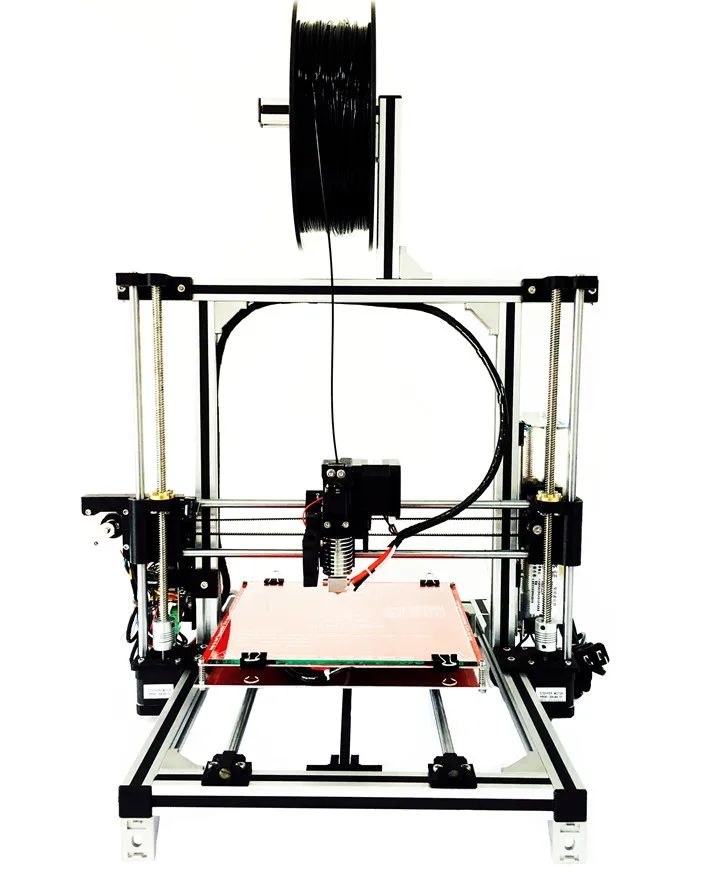 In addition to its hefty price, a major downside is its difficulty in handling third-party filaments. The Dremel works best with company made filament. Similar to Apple, the printer is meant to function like a closed ecosystem.
In addition to its hefty price, a major downside is its difficulty in handling third-party filaments. The Dremel works best with company made filament. Similar to Apple, the printer is meant to function like a closed ecosystem.
But also just like the Apple, the Dremel performs flawlessly and is worth the big bucks it asks for.
- Exceptional print quality
- Educational material
- Fully enclosed
- Expensive
- Hard to use third party filaments
Check Latest Price
4.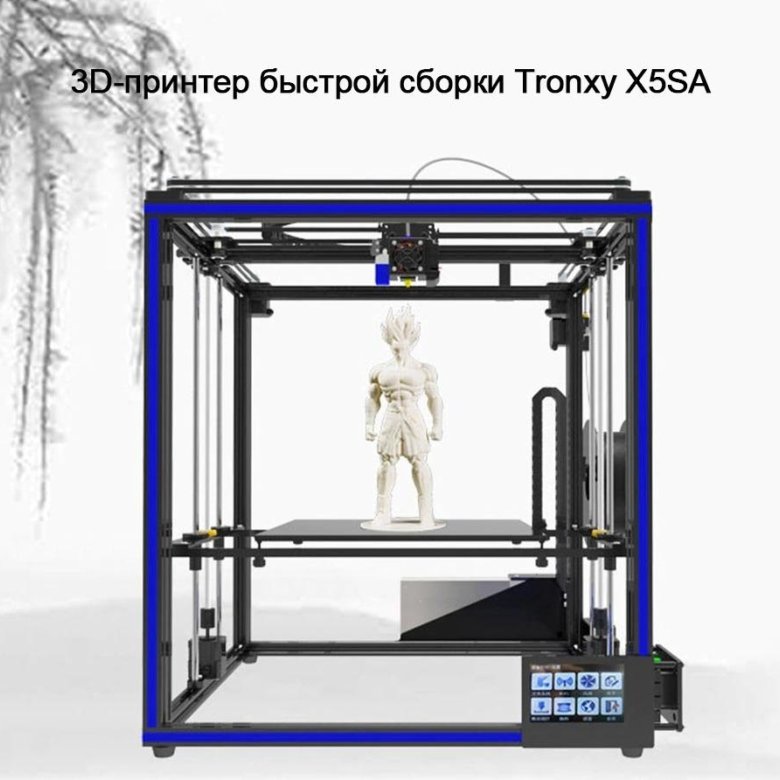 Ultimaker S5 (Premium Choice)
Ultimaker S5 (Premium Choice) 3D Printer Type: FDM | Materials: Tough PLA, TPU 95A, ABS, Nylon & TPU | Build Volume: 330 x 240 x 300 mm
This 3D printer is for the true professionals; for those that don’t play around. With one of the biggest build volumes and a dual-extruder, this is an Olympic grade printer
Make sure you have a desk dedicated just for S5, it’s humongous. The 3D printer is not meant for newbies, it’s meant for professionals and small business owners. There’s no better printer than this for creating functional prototypes.
The print bed comes with two types: a glass bed for everyday use and a special anodized aluminum bed for advanced materials (like polycarbonate and ABS). Both of these can be swapped easily.
Ultimaker Tough PLA, is a special PLA for functional prototyping, tooling, and manufacturing aids. This PLA has similar impact strength to ABS and also has a higher stiffness.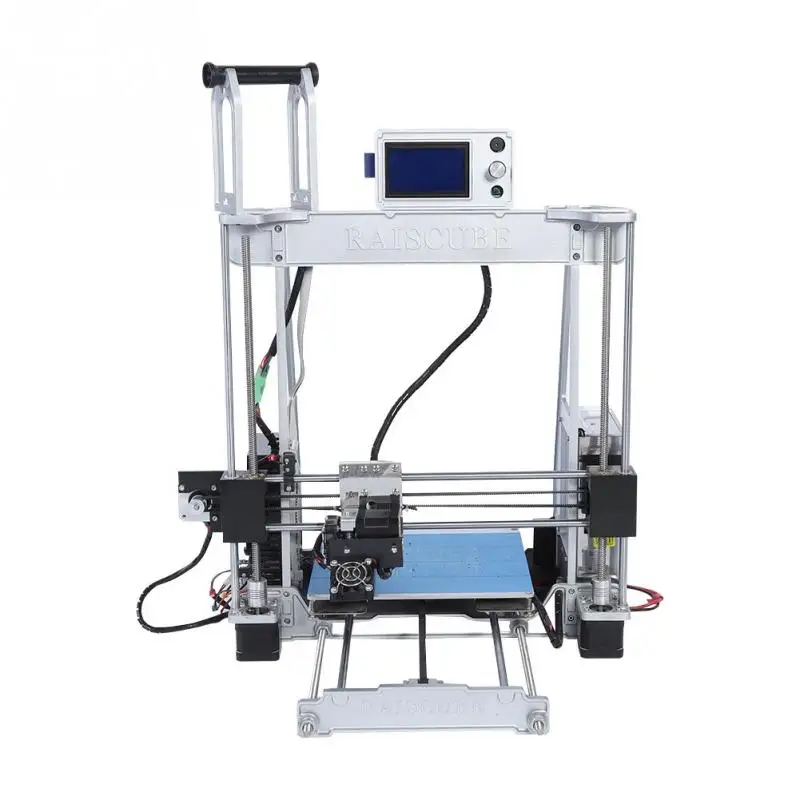
The feature that sets the S5 apart from other FDM 3D printers is its dual extruding feature. It comes with two printheads and two print cores.
The BB print core is meant only for PVA, whereas the AA print core is mainly for all other materials. If you want to print dual colors, use two AA cores. The PVA core is primarily used for support.
The user experience of the S5 is a delight. From the touchscreen to the loading filament, every aspect of the printer is intuitive to use.
If you want to squeeze the highest resolution possible out of an FDM 3D printer, then the S5 is the machine to get. It can reach incredibly low XY resolutions of 0.02 mm. The Z-axis resolution is 0.1mm.
The pricing for the Ultimaker S5 can make people sweat. Luckily, there’s a cheaper version of the S5- the S3 (around $2000 cheaper. But it’s still pricey).
Here are some of the features that make the S5 more expensive.
The Ultimaker is similar to the Dremel in that it’s preferable to use filaments from the company itself.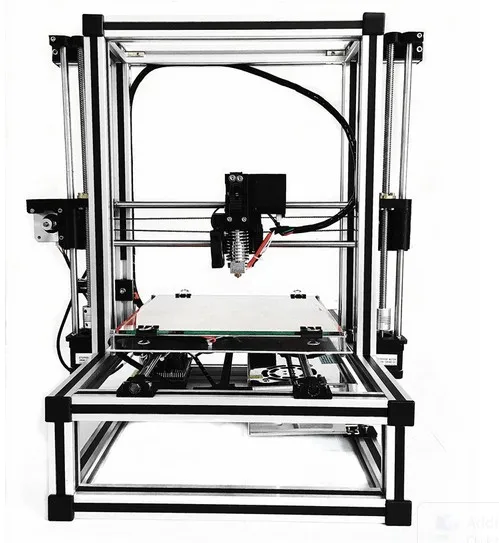 If not, you could find yourself with poor-quality prints.
If not, you could find yourself with poor-quality prints.
If you want the best high resolution 3D printer in the FDM category, the Ultimaker S5 is a no-brainer.
- Dual Extrusion
- Picture perfect print quality
- A joy to use
- Will suck your wallet dry
Check Latest Price
SLA/Resin 3D Printers:
5. Elegoo Mars 2 Pro (Best Value)3D Printer Type: LCD | Materials: 405nm UV Resin | Build Volume: 129 x 80 x 160 mm
A big advantage of resin printers is the high resolution they produce at a fraction of the price.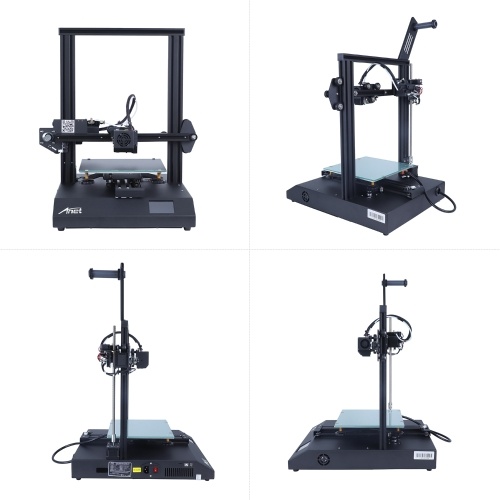 And the Elegoo Mars 2 is an excellent example of this.
And the Elegoo Mars 2 is an excellent example of this.
The Mars 2 Pro comes with a 6.08 monochrome LCD with a 2K HD resolution which plays a huge factor in the quality of the prints.
The build quality is solid, with a CNC machined aluminum body. The 3D printer doesn’t budge, ensuring that the high-resolution prints maintain steady quality. Build size is small, as with most resin 3D printers.
Another advantage that resin printers have over FDM printers is their printing speed. They take about 1-2 seconds per layer, only. The Elegoo Mars 2 inherits this speed gene from the family of resin printers.
It prints miniatures with amazing precision. The XY resolution is 0.05 mm and the Z-axis resolution is just 0.01 mm.
You’ll find the 3D printer great for home use. Make sure to keep it in a ventilated space as resin fumes are toxic (luckily some of the fumes are mitigated by the carbon filter in the printer).
The Elegoo Mars 2 is the Creality of the resin world and is always a worthwhile buy.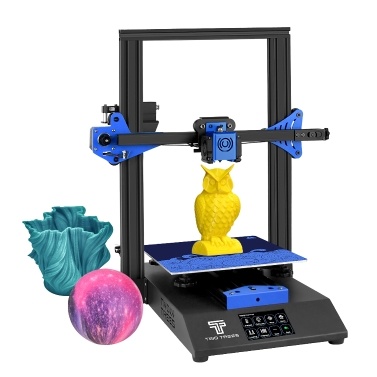
- Great prints
- Inexpensive
- Small build volume
Get Discount (Official Store)
Check Latest Price
6. Phrozen Sonic Mini 4K (Beginner Friendly)3D Printer Type: LCD | Materials: 405 nm UV Resins | Build Volume: 135 x 75 x 130 mm
4K is the rage these days. And Phrozen Sonic Mini capitalized on the trend with the best resin 3D printer under $400, the Sonic Mini 4K.
On the outside, the Sonic Mini 4K is made of plastic, which can lull you into thinking this 3D printer is cheap stuff. Don’t be fooled though; the printer is a value-packed powerhouse.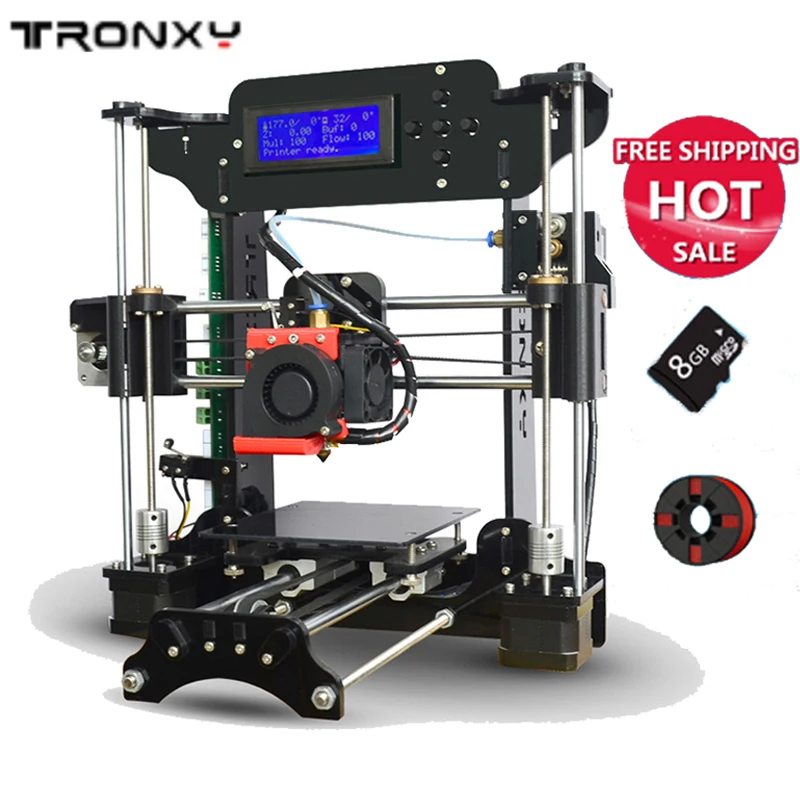
The build volume, like the Mars 2 Pro, is small. So the 3D printer is best suited for small prints. Design-wise, it looks similar to the countless resin printers out there in the market.
Let’s talk about the 4K screen. It’s the printer’s signature feature. It can produce staggeringly detailed prints at incredible speeds. 4K LCDs aren’t common in the 3D printing world, So an affordable 3D printer with this feature is a great boon for newcomers and professionals alike.
4K prints don’t look vastly different from 2K 3D printers. For some prints, the results aren’t noticeable, for others, the details are only subtly visible. If you’re a 3D printing connoisseur, however, you’d notice a difference. So the Mini 4K is suited for 3D printing veterans.
The XY layer resolution of the Mini 4K is 0.035 mm, and the Z axis resolution is 0.01 mm. The test prints of the Mini 4K were better than the test prints of the Elegoo Mars 2 Pro.
The printer works best with the company’s resin supply. If you buy third-party resin, you’ll have to play around with the layer settings to get an ideal print.
If you buy third-party resin, you’ll have to play around with the layer settings to get an ideal print.
Get this machine if printing miniatures and jewelry are among your favorite 3D printing pastimes.
- One of the best 3D printer resolution in the market
- Excellent value for money
- Third-party resins may not work as well as Phrozen’s own resin supply
Click For Best Price (PHROZEN Store)
Check Latest Price
7. Anycubic Photon Mono X3D Printer Type: LCD | Materials: 405 nm UV Resins | Build Volume: 192 x 120 x 245 mm
Most SLA printers are tiny.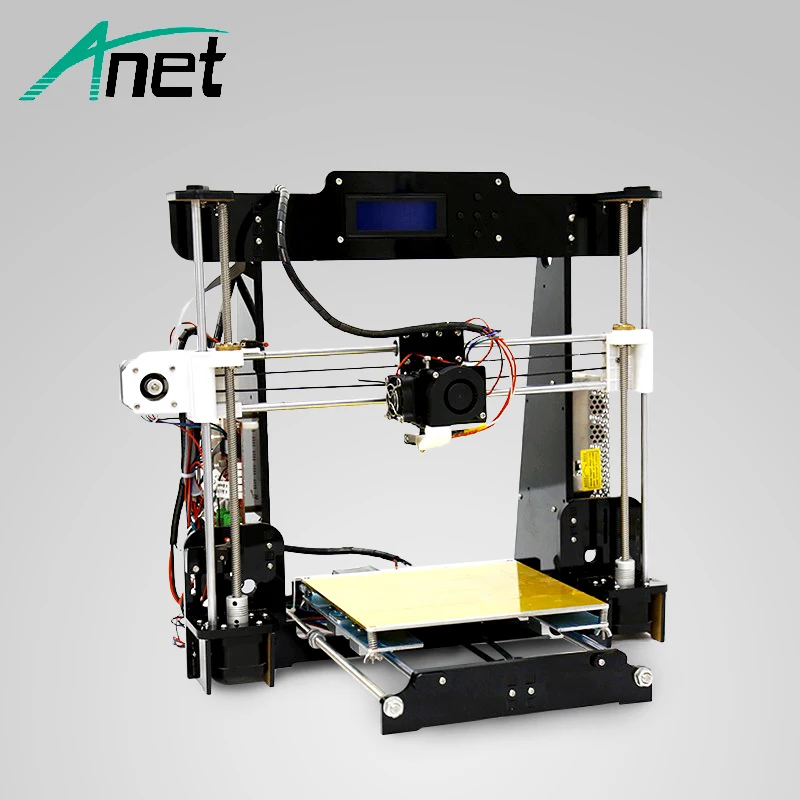 But Anycubic Photon Mono X breaks the mold. With its large build volume and high-resolution printing capability, it’s a highly desirable precision 3D printer on our list.
But Anycubic Photon Mono X breaks the mold. With its large build volume and high-resolution printing capability, it’s a highly desirable precision 3D printer on our list.
The frustrating thing about most SLA printers are small build volumes, so it’s welcome when printers like the Mono X hit the market.
Sometimes bigger is better (and more beautiful), and that’s exactly the case with this printer. Not to objectify printers, but the printer with its yellow acrylic lid is a looker.
When we compared prints between the Mono X and Mini 4K, we found that the latter is better in terms of print quality – but only by a margin. For 99% of people, the difference would be negligible. The Mono has a similar resolution to the Mini – 0.05 mm XY resolution and 0.01 mm Z axis resolution.
The addition of the WiFi on this printer was a ridiculous option. With this, you can only connect Anycubic’s mobile app to the printer. You can’t connect the slicer on the computer to the machine.
For those who have a business to run and who like to print fast, the printer is a speed-demon, with a printer velocity of 60 mm/h.
Price withstanding, the Mono X checks all the boxes you’d want in a high resolution 3D printer for resin printing.
- Huge build volume
- Printer looks stunning
- Prints look stunning
- Expensive
Get Discount (Official Store)
Check Latest Price
8. Formlabs Form 3 (Most Accurate 3D Printer)3D Printer Type: SLA | Materials: Standard, Tough & Durable, Rigid, Engineering, Flexible, Jewelry, Dental & Medical Resins | Build Volume: 145 x 145 x 185 mm
If we had to give this printer a score, we’d give it a 11/10.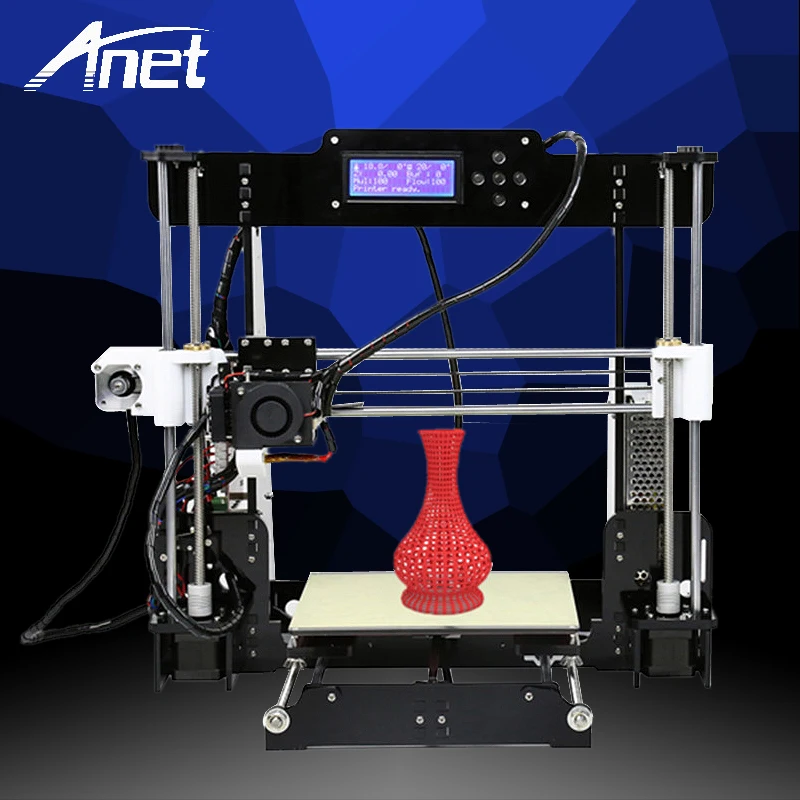 Or a 20/10. The Formlabs Form 3 blows past all the previous machines we’ve reviewed so far, and words cannot begin to describe it.
Or a 20/10. The Formlabs Form 3 blows past all the previous machines we’ve reviewed so far, and words cannot begin to describe it.
The Form 3 is the resin equivalent of the Ultimaker S5 (though slightly cheaper). The capability of the machine far exceeds standard resin printers on the market.
The build volume is a respectable 145 x 145 x 185 mm. You could always upgrade to the massive Form 3L, a newer release with dimensions of 335 x 200 x 300 mm.
The Form 3 uses technology few printers have in the market called Low Force Stereolithography. This is just another fancy sounding tech gimmick; we’ve had zero failed prints after days of testing and still counting. Incredible.
Resin for Form 3 comes in cartridges. You’ll have to purchase these from their site to refill your stock. The advantage of these cartridges is that you save yourself from poisonous resin.
There are also different types of resin – Clear, Color, Rigid 10K, and Model. Each looks and feels different, for example, Rigid 10K has a white, matte finish.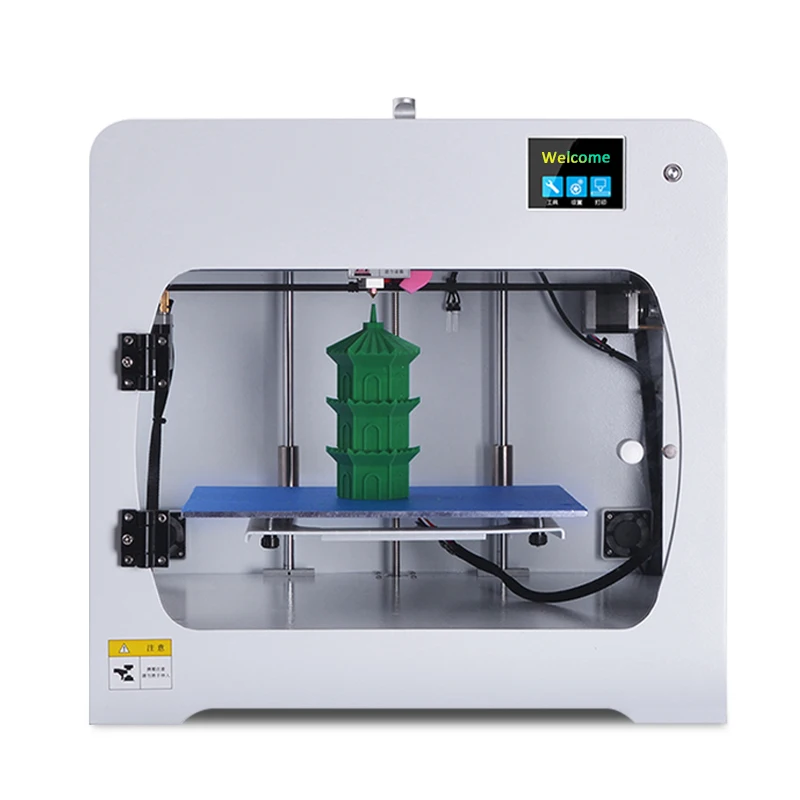 On the other hand, Clear prints are translucent. They look really cool.
On the other hand, Clear prints are translucent. They look really cool.
Printing is oh so easy on this machine, thanks to Formlab’s PreForm software. The software does most of the work for you. All you have to do is press print with minimal tinkering, thanks to its automatic processing capability.
It’s no surprise that printing on such a machine produces the most accurate, clean, precise models possible on a printer. Both the XY and the Z resolutions are around 0.025 microns.
The only downside to the printer is the expensive printer and cartridges. Hence this printer is best suited for business; they can earn their money back within weeks with the capability of the machine.
Formlabs Form 3 is the most accurate 3D printer on our list if you like being at the cutting edge of technology.
- Impeccable prints
- Variety of resin types
- Cutting edge software
- Expensive on all fronts
Check Latest Price
What is Resolution in 3D Printing? X, Y, and Z Resolution
Source: Youtube MiniacThe technical definition of resolution in 3D Printing is the shortest distance a 3D printer nozzle travels when depositing filament.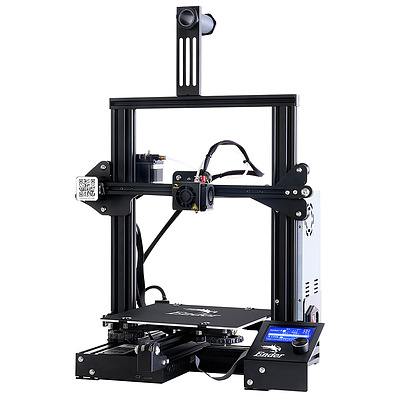
If you’ve ever purchased a phone or television (or maybe you made your girlfriend/boyfriend get them for you), you’d have come across the term resolution frequently. You’ll know that a 1080p screen has better picture quality than that of a 720p screen.
Likewise, in 3D printing, a high resolution 3D printer is by far the most important factor to consider when buying a printer if you want high-quality prints.
You’ll often hear terms like Z layer resolution and XY resolution in 3D printer reviews. The Z layer resolution is the height of a single layer in a 3D print. The X and Y resolution, on the other hand, is the shortest distance the nozzle travels in the horizontal direction.
Other Factors That Affect Print Quality
Source: Youtube NeedItMakeItMaterial
Not all materials print with the same quality: some materials produce higher quality prints than others.
Printer Stability
Vibrations during printing can hamper 3D printing accuracy.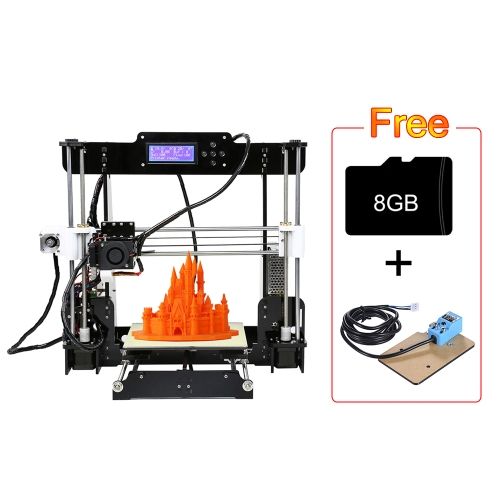 That’s why a sturdy, stable printer is important. All metal printers are sturdier than plastic printers.
That’s why a sturdy, stable printer is important. All metal printers are sturdier than plastic printers.
Type of Printing
Resin printing produces a higher resolution of prints than FDM printing.
Temperature
Different plastics print better at different temperatures. For ABS, extrusion temperatures of up to 240-250°C are ideal for accurate prints. PLA on the other hand benefits from temperatures of 200-220°C.
Slicer settings
Slicer settings play a big role in print quality, so make sure you play with these settings to get the perfect print. The layer height will have a big effect on print quality and print speed.
Nozzle size
The smaller the nozzle size, the more accurate and high resolution the print.
When Do High-Quality 3D Printers Make the Most Difference?
Source: Youtube MiniacHigh-quality 3D printers don’t make much of a difference on basic flat surfaces like a cube. A cheaper less accurate printer can even produce the same cube in a shorter period of time (because the nozzle diameter size is larger which means it deposits more filament in less layers).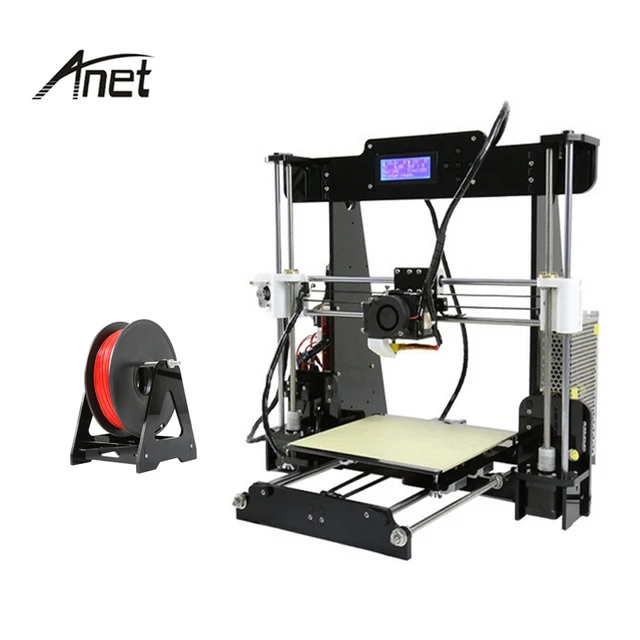
But if you love printing intricate miniatures, prints with curved or diagonal surfaces, or embossings and engravings, then the difference between a high resolution 3D printer vs a low-resolution printer is blatantly obvious.
Advantages and Disadvantages for High Resolution 3D Printers
High-quality 3D printers don’t make much of a difference on basic flat surfaces like a cube. A cheaper less accurate printer can even produce the same cube in a shorter period of time (because the nozzle diameter size is larger which means it deposits more filament in less layers).
But if you love printing intricate miniatures, or prints with curved or diagonal surfaces, or embossings and engravings, then the difference between a high resolution 3D printer vs a low-resolution printer is blatantly obvious.
Source: Youtube My Tech Fun
Advantages
Print Quality
Higher resolution printing naturally leads to smoother surfaces, finer details, and more accurate printing.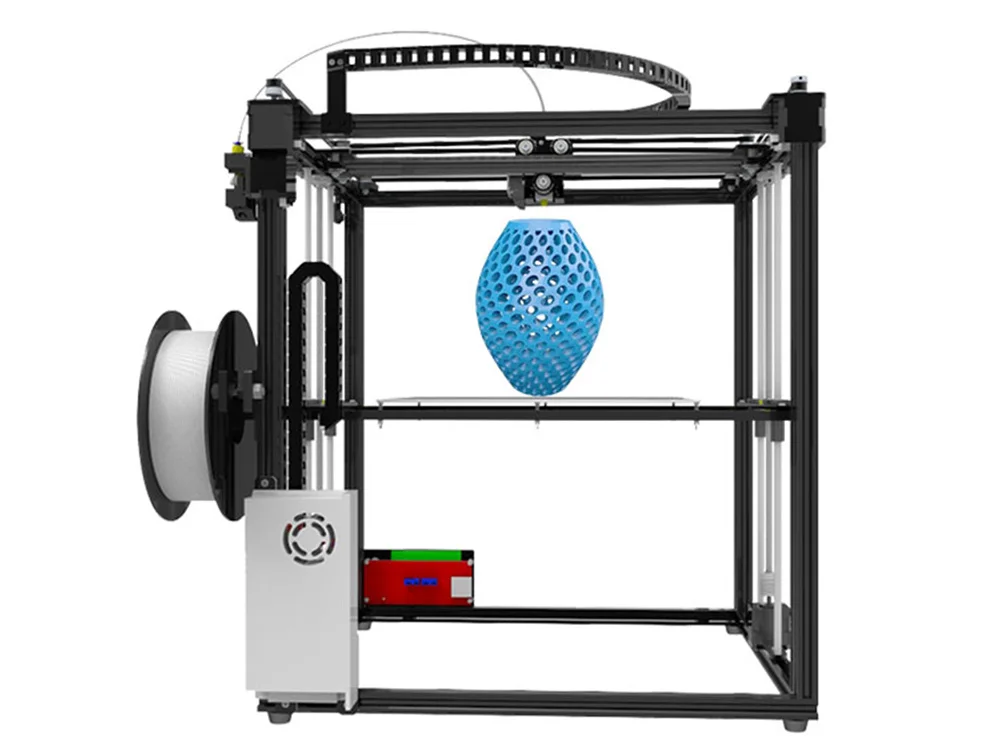
Efficient Workflows
High-res printing also leads to efficient workflows while being uncompromising on speed and quality.
More Variability in Creating Objects
These 3D printers can create the most intricate and complex of designs while maintaining quality.
Picture a model or a sculpture in your head. You can make a real-life version of that with the help of a high res 3D printer.
Disadvantages
Slow Speed
It’s not all sunshine, rainbows, and popcorn with high resolution 3D printers. A piece that may take an hour with a lower res 3D printer will take four hours to print on a high-res one.
More error-prone
The more the layers in a print, the more time it takes to print, and the greater the chances of a printing error.
Requires Precise Calibration
Your printer setting game needs to be tight to get the highest resolution prints possible. The extrusion and bed temperatures must be just right, and the right nozzle must also be selected.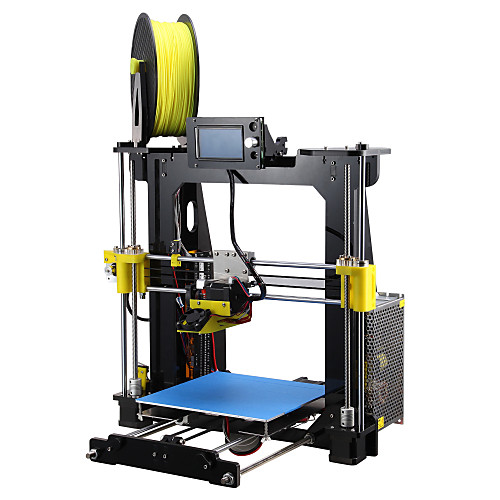
SLA VS FDM
Like we briefly touched on before, SLA (aka resin) 3D printers produce far more accurate prints than FDM printers.
SLA printers use UV or laser to cure the resin. These two light sources have different spot sizes. Anycubic Photon Mono X, a popular resin printer, has an XY resolution of 0.05mm and a Z layer resolution of 0.01mm. The resolution of most high-end consumer printers falls in this range.
On the other hand, FDM 3D printers don’t compare to resin printers. For example, one of the best FDM printers, the Prusa MK3S, has a Z layer resolution of only 0.05mm.
Best High Resolution 3D Printers 2022: Complete Buyer's Guide
Resolution is a much-misunderstood aspect of accurate 3D printing, and there are many important factors that affect print quality beyond just layer height. This article recommends the best high-resolution 3D printers, explains the factors making up a high-resolution 3D printer, and the benefits and drawbacks.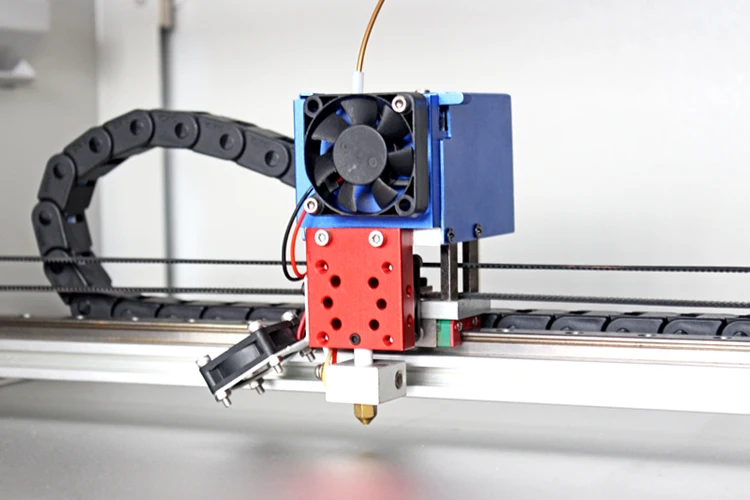
Typically within 3D printing resolutions, the Z-axis resolution, or Z-resolution, is most discussed. This is the vertical resolution and means the minimum layer height or thickness possible for a 3D printer.
Small layers mean better resolution, and better surface quality parts with smoother surfaces and crisper edges.
Therefore, having a high-quality 3D printer that can print with small layer heights can be a great advantage. However, this is not the only factor that affects print quality, with a host of others affecting whether a high-resolution 3D printer actually prints accurate, smooth parts.
Accurate 3D printers we recommend
| Name | Max build volume (mm) | Min layer height | Price | Where to buy |
|---|---|---|---|---|
| Ender 3 V2 | 220 x 220 x 250 | 0.1 mm | $279 | Creality Store here |
| Elegoo Mars 2 Pro | 129 x 80 x 160 | 0.01 mm | $280 | Elegoo here |
| Anycubic Photon Mono 4K | 132 x 80 x 165 | 0.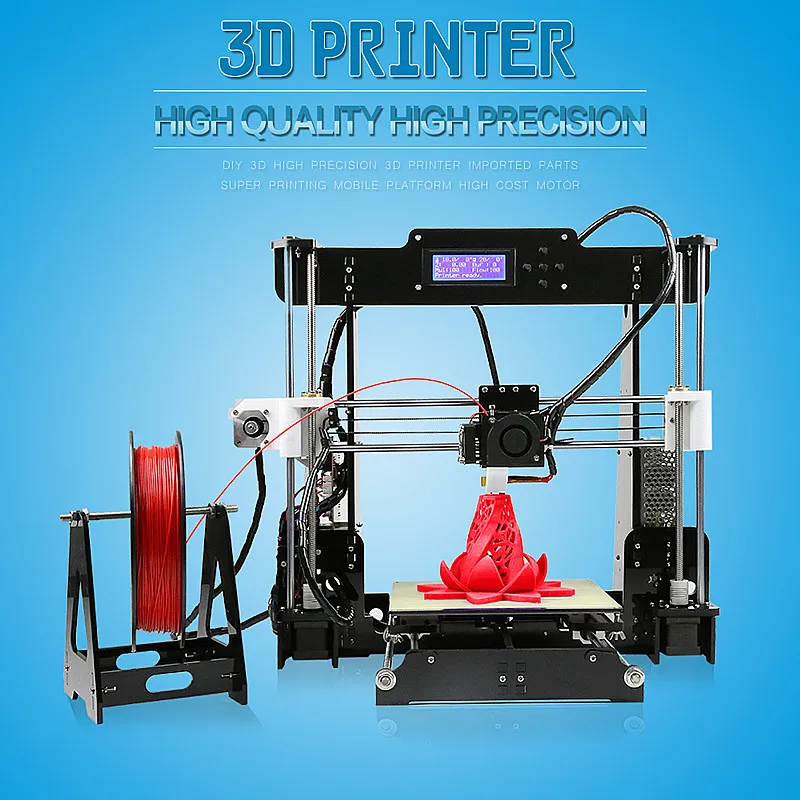 01 mm 01 mm | $299 | Anycubic Store here |
| Elegoo Mars 3 | 143 x 90 x 165 | 0.01 | $349 | Elegoo here |
| Prusa i3 MK3S | 250 x 210 x 200 | 0.05 mm | $749 / $999 | Prusa Store here |
| Formlabs Form 3 | 145 x 145 x 185 | 25 microns | $3,499 | Formlabs Form 3 |
| Ultimaker S3 | 230 x 190 x 200 | 20 microns | $3,850 | Dynamism Store here |
Resolution in 3D printing: X, Y and Z resolution
Z-resolution corresponds to the layer height of a printed part. However, the X and Y-planes are also very important in a high resolution 3D printer.
The X and Y axes control the 2D parts of the print: those within each 2D layer. The Z then adds multiple layers, responsible for height – the third dimension. Though they are all axes, the XY and Z axes are controlled by two separate systems, with some FDM printers having far more accurate Z-resolutions than XY.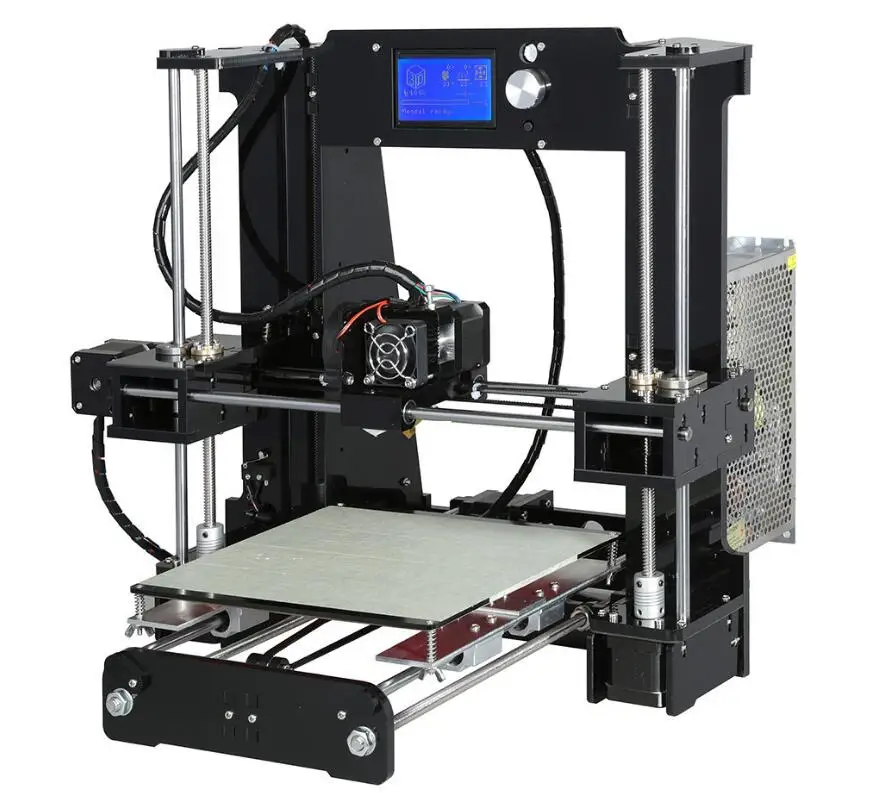
The X and Y resolutions are the smallest movements the printer’s print head (the projector, extruder or laser, depending on technology) can make within a layer – horizontally.
Different 3D printing technologies are capable of better resolutions than others. For example, SLA 3D printers are more accurate than FDM 3D printers, even though their Z-resolutions can look similar on paper. This is mostly down to the better XY resolutions resin 3D printers can print with, leading to smoother surface areas, with the best resin printers able to print parts with barely noticeable layer lines.
However, other factors can also significantly affect print quality.
Other factors that affect print quality
- Nozzle size: smaller nozzles on FDM 3D printer extruders can print more intricate and precise details. Standard nozzles are typically 0.4mm, though you can get far smaller 0.1 or 0.2mm nozzles for small and accurate details. They also work better for printing supports and overhangs.
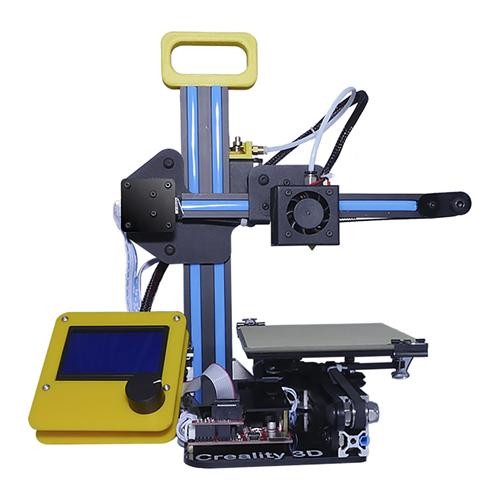
- Stability of frame & vibrations: a sturdy, heavy metal frame that anchors the printer and print bed to the ground is less affected by vibrations and other extraneous factors that can affect print quality.
- Material: different materials are more accurate and precise than others, or are easier to print successfully than others.
- Technology: for example, SLA printers are more accurate than FDM, and PolyJet offers some of the best precision in 3D printing.
- Slicer and printer settings: your 3D slicer settings will make all the difference in print quality, and even the most high resolution 3D printers will print poor quality models if not optimized.
When do high quality 3D printers make the most difference?
If you plan on 3D printing a very basic structure like a cube, whether you use a high quality 3D printer, or use large or small layers, will make no difference. In fact, using small layer heights will just make the exact same print take far longer.
For these very basic models with few intricate parts or details, a standard cheap 3D printer will work almost as well as an industrial, high-resolution 3D printer that costs 20x the price.
However, high-quality precise 3D printers make a significant difference in more complex parts that have diagonal or arched lines or sides, or have embossing and engravings.
Especially in curved or diagonal parts, the lower the layer height and more accurate the printer, the less stepped these features will appear, and the smoother they will look, even up close.Very high-resolution 3D printers such as resin printers are commonly used to 3D print jewelry molds, such as this 3D printed ring. Source: Shapeways.
Moreover, if you are printing a small part, for example 3D printing a miniature or tabletop model, using an accurate printer with very small layer heights can be worth it, as even if it takes several times as long this still won’t take more than an hour.
The best high-resolution 3D printers
Now we have illustrated the components that make up a high-quality 3D printer, here are some recommendations.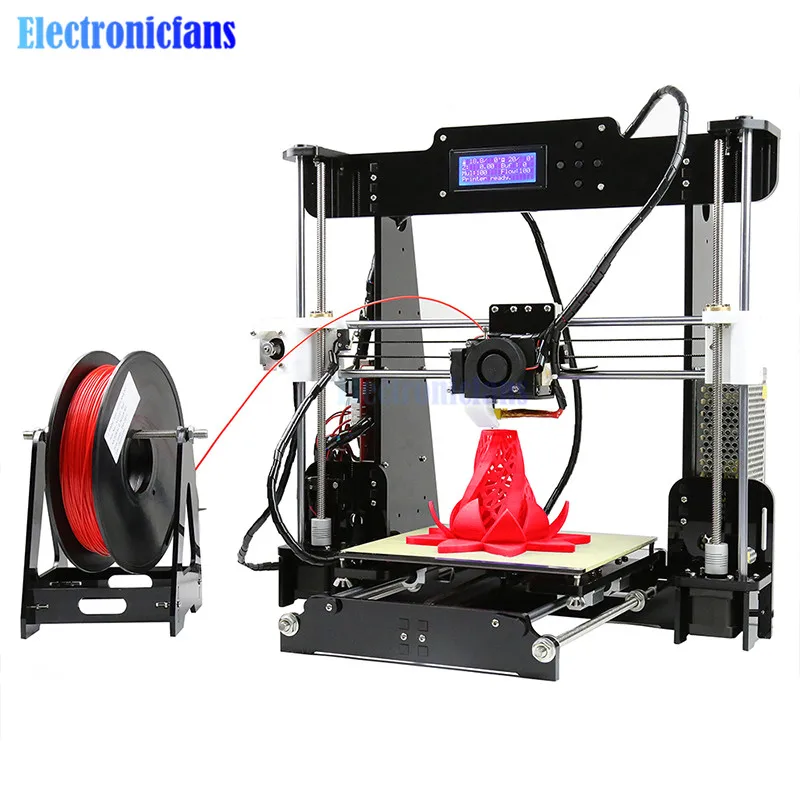
High resolution and quality here are relative, meaning that we have chosen those in each price range that excel – a $200 3D printer cannot compete with an industrial 3D printer costing $20,000, but it may be the best in its price range.
3DSourced is reader-supported. When you buy through links on our site, we may earn an affiliate commission. Learn more
Ender 3 V2 – accurate 3D printer for under $300
- Price: $279 – Available on Creality Official Store here / Available on Amazon here
- Build volume: 220 x 220 x 250 mm
- Type of 3D printer: FDM 3D printer & DIY 3D printer
- Minimum layer height: 0.1mm
Just as the original Ender 3 was starting to get long in the tooth, Creality swooped in with the Ender 3 V2. A well-thought-out printer, the Ender 3 V2 remedies many of the misgivings of its predecessor while still keeping the asking price affordable to even the most budget-restrained makers.
The belt tensioners, 4.2.2 32-bit mainboard, and silent stepper motor drivers do a lot to present what feels like a far more modern printer compared to the Ender 3.
In the context of low-cost high-resolution 3D printer performance, the Ender 3 V2 spec sheet doesn’t exactly wow, with a middling 100-micron layer resolution. But, don’t be fooled; high-resolution printing is defined by more resolution alone.
In action, the Ender 3 V2 assembles with a level of accuracy that feels inordinately good for a low-cost FDM printer. With few visible, warping, or layering issues with an excellent overall quality for larger parts and respectable results for smaller, detailed parts. And, coupled with that is a suitably large build volume – 220 x 220 x 250 mm to be exact – for larger projects and even small-scale batch printing.
For the price, you additionally get to play with a decent range of materials – PLA, ABS, PETG, TPU. The only caveat is you’ll need to stick to more straightforward prints, those relatively free of intricate embossing, minute detail, tight arches, and the like.
In our experience, the Ender 3 V2 shines best when used to create household items such as plant pots or, say, vases, figurines, toys, accessories, and similar items. We’d wager it also packs in enough printing aptitude for a modest business selling non-geometrically complex products.
Be warned; the Ender 3 V2 is very much a hobby kit printer, requiring its fair share of tinkering to perform at its best. Curious beginners up for a challenge and seasoned makers should find this a gratifying part of the printing process, but green newcomers may prefer an option a little lighter on the ‘hands-on’ aspects.
Elegoo Mars 2 Pro
- Price: $299 – Available at Elegoo store here / Available on Amazon here
- Build volume: 129 x 80 x 160 mm
- Type of 3D printer: LCD 3D printer
- Z-axis accuracy: 0.00125 mm, XY Resolution: 0.05 mm
The Elegoo Mars and Anycubic Photon range have both revolutionized low-cost, high-resolution 3D printing for hobbyists and businesses worldwide. The Elegoo Mars 2 is capable of such accurate resin models that it is increasingly used for casting 3D printed jewelry molds before having them made into gold or other metal rings, bracelets, and chains.
The Elegoo Mars 2 is capable of such accurate resin models that it is increasingly used for casting 3D printed jewelry molds before having them made into gold or other metal rings, bracelets, and chains.
Read more: our Elegoo Mars 2 Pro review & test prints
As an MSLA printer, the Elegoo Mars prints resin models that outperform its FDM counterparts, with high resolution 3D prints that barely show their layers. The 6-inch 2K LCD screen makes for fast 3D printing, able to cure a layer every 2 seconds.
Additionally, the Mars 2 Pro’s CNC machined aluminum structure improves stability, eliminating outside vibrations that could affect a precise 3D printed model’s detailed features. Moreover, the new and improved build plate is designed for better adhesion and better quality outcomes.
The printer is accessible in 12 languages, so non-English speakers needn’t worry, and if you do have any problems with your Elegoo Mars 2 Pro, the company will replace it with its 1-year warranty.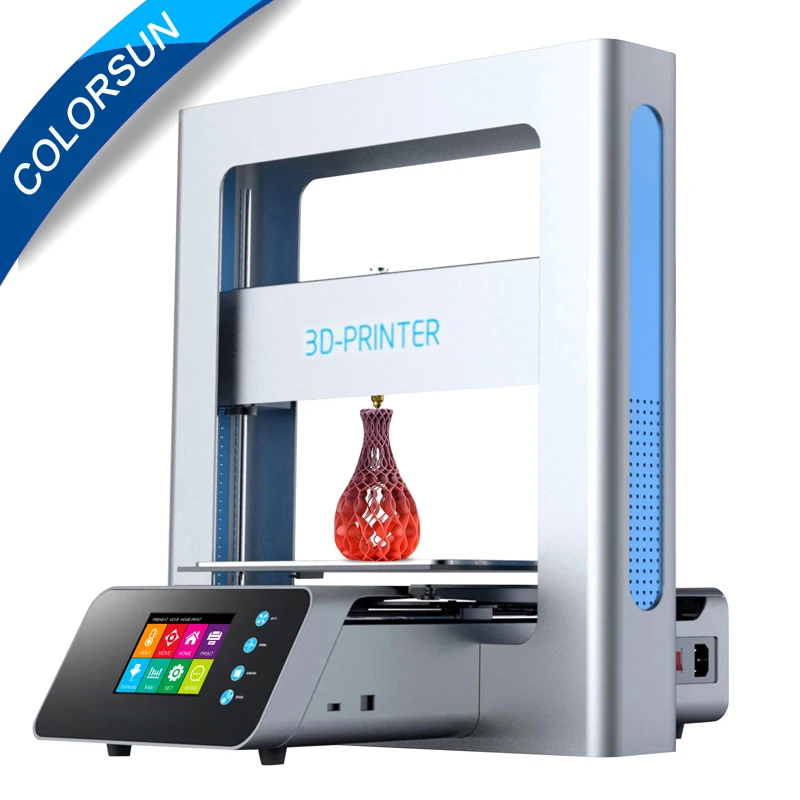 Overall, it’s a great, high-quality 3D printer for cheap and precise resin part production.A dinosaur head we 3D printed when we reviewed the Elegoo Mars 2 Pro.
Overall, it’s a great, high-quality 3D printer for cheap and precise resin part production.A dinosaur head we 3D printed when we reviewed the Elegoo Mars 2 Pro.
Anycubic Photon Mono 4K
- Price: $299 – Available at Anycubic Official Store here / Available on Amazon here
- Build volume: 132 x 80 x 165 mm
- Type of 3D printer: LCD 3D printer
- Z-axis accuracy: 0.00125 mm, XY Resolution: 0.035 mm
Yet another iterative upgrade to a respected family of resin printers, the Anycubic Photon Mono 4K is another impressive option for those high-res 3D printer heads out there. It’s no understatement to count the Anycubic Photon Mono 4K among the top cheap high-resolution 3D printers out there.
Under the hood, the Anycubic Photon Mono 4K sports, you guessed it, a 4K LCD panel capable of a pixel resolution of 35 microns, a 15-micron improvement on its predecessor. In layman’s terms, this equates to a smooth finish and fine detail in every print, both immediately apparent to the naked eye.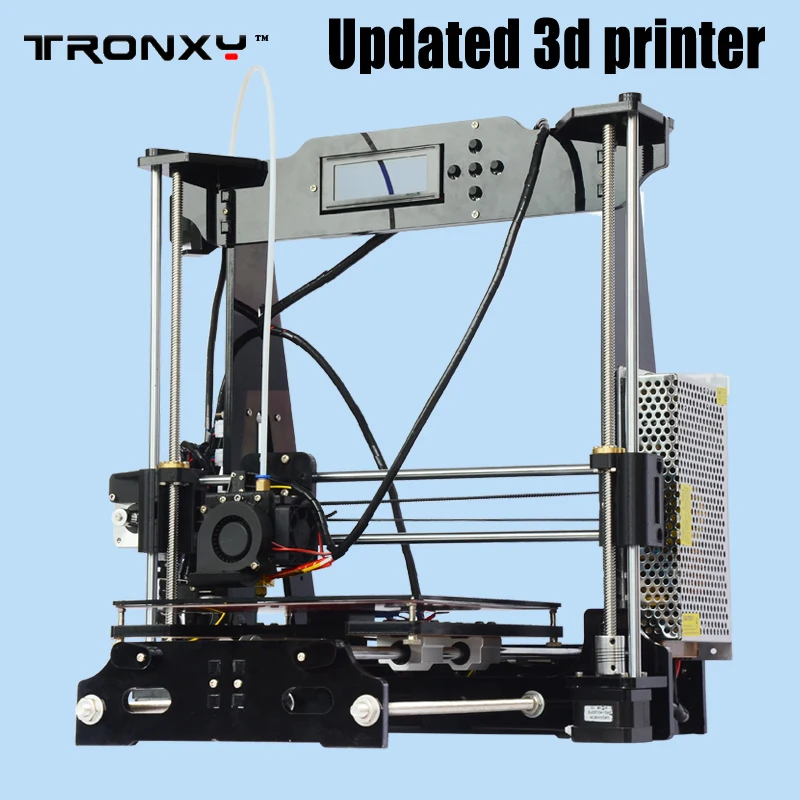
Imperfections are near indistinguishable, and, dare we say it; the results are as close to perfection as we’ve seen in this price range in the overwhelming majority of prints. The Anycubic Photon Mono 4K also nips through prints with a more-than-respectable sub 2 second layer cure time.
For us, the printer brims with hobby potential. We’d be hard-pressed to pinpoint an application where it doesn’t impress. That said, the Anycubic Photon Mono 4K comes into its element with 3D models and similar display items thanks to its propensity for carving out detailed features.
Much like other resin printers, the Anycubic Photon Mono 4K comes with its fair share of mess and requires strict adherence to a regular cleaning regimen. The absence of a resume function and an occasionally temperamental native slicer feel like unfortunate oversights. But, these are minor gripes for an otherwise excellent low-priced, small form factor resin printer.
Elegoo Mars 3 – Best Cost-Effective Resin Pick
- Price: $349 – Available at Elegoo store here / Available on Amazon here
- Build volume: 143 x 90 x 165 mm
- Type of 3D printer: LCD 3D printer
- Z-axis accuracy: 0.
 00125 mm, XY Resolution: 0.035 mm
00125 mm, XY Resolution: 0.035 mm
The Elegoo Mars is back and arguably better than ever, with a new numeral slapped on for good measure. Fast, beautifully detailed, compact, and cost-effective, the Elegoo Mars 3 also sports the specs we like to see in high-resolution-geared resin printers, namely a 6.6-inch 4K Ultra Monochrome LCD and a razor-thin 35-micron resolution.
Marketing and technical blather aside, Elegoo Mars 3 delivers impressively detailed results with clean edges and on-point accuracy suitable for even the most demanding resin projects. A larger build volume than the Mars 2 Pro, tallying up to 143 x 90 x 165 mm, also lends itself to larger prints while keeping up those minute features and finer details.
We’re particularly impressed with how well the printer fares when tackling figurines, toys, and models, even what we deem large ones for a resin printer. Best of all, the Elegoo Mars 3 sticks to the Mars tradition of no-nonsense printers that perform to the same high standard day-in, day-out.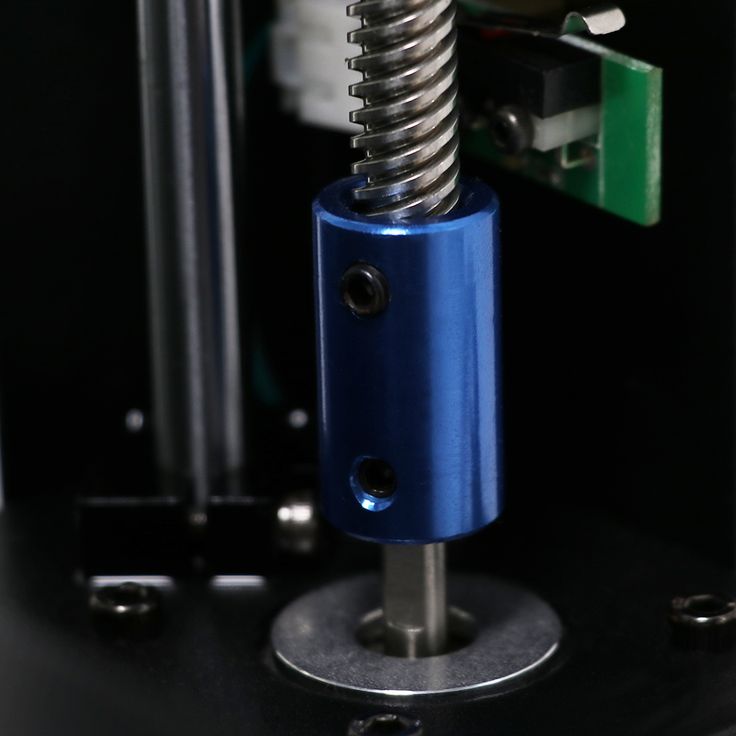 In other words, a workhorse.
In other words, a workhorse.
Despite some reservations about the flimsy lid and the lack of features like air filtration and Wi-Fi connectivity, we highly recommend the Elegoo Mars 3 for makers, hobbyists, and businesses looking for a cheap high-resolution 3D printer. Note that the Elegoo Mars 3 is tied to the ChiTuBox slicer and won’t work with third-party alternatives.
Prusa i3 MK3S+
- Price: $749 kit / $999 assembled – Available on Prusa Store here
- Build volume: 250 x 210 x 200 mm
- Type of 3D printer: FDM 3D printer & DIY 3D printer
- Minimum layer height: 50 microns
Balancing high resolution and workhorse-like reliability, the Prusa i3 MK3S+ is known for being one of the best 3D printers around. Available as a 3D printer kit or pre-assembled for a few hundred dollars extra, this FDM printer can print precise 50-micron layers, and do so time and time again without fail.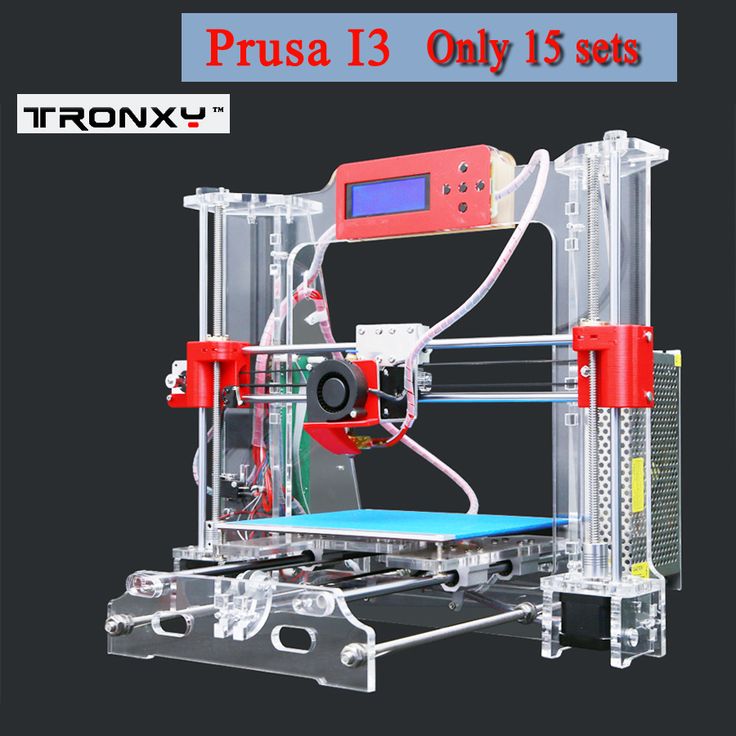
For better XY resolutions and part quality, resin printers like the Elegoo Mars are still better, but the Prusa balances still excellent quality, with wider material compatibility – from ABS to PLA to Polycarbonate to Nylon! – and can even be adapted into a color 3D printer that can print 5 colors simultaneously if you purchase the Multi Material Upgrade Kit.
- You can purchase the Multi Material Upgrade Kit from Prusa here.
It’s fast, always improving, and balances excellent resolution with dogged grit and reliability.
Formlabs Form 3
- Price: $3,499 – Available on Dynamism Store here
- Build volume: 145 x 145 x 185 mm
- Type of 3D printer: SLA 3D printer
- XY Resolution: 25 microns
The leading prosumer resin 3D printing company, Formlabs printers are now used extensively across the jewelry, dental, medical and hearing aid sectors.
Looking at the numbers underpinning the Formlabs Form 3 – chiefly, a 145 x 145 x 185 mm build volume and 25-micron resolution – isn’t exactly a head-turner. However, Formlabs’ innovative LFS tech is the type of innovation we like to see. The real sophistication lies in just how easy the printer is to use. With the Formlabs Form 3, the onus is on the machine to do its thing, no faffing and no babysitting required.
However, Formlabs’ innovative LFS tech is the type of innovation we like to see. The real sophistication lies in just how easy the printer is to use. With the Formlabs Form 3, the onus is on the machine to do its thing, no faffing and no babysitting required.
And, the results follow. Equipped with high-quality resin, the Formlabs Form 3 performs exceptionally to yield beautifully finished and detailed prints suitable for commercial ends. Print failures are all but nonexistent; you’d need to physically shake the machine during a print to trigger anything resembling errors.
You do pay a hefty premium for the pleasure of owning a Formlabs Form 3. However, the expense is quickly recouped in time saved alone by the set-a-task-and-forget nature of the printer, something that could conceivably prove invaluable in a fast-paced commercial environment. For small to medium-sized businesses requiring small-batch failsafe precision models along with prototyping, there’s little out there to rival the Formlabs Form 3.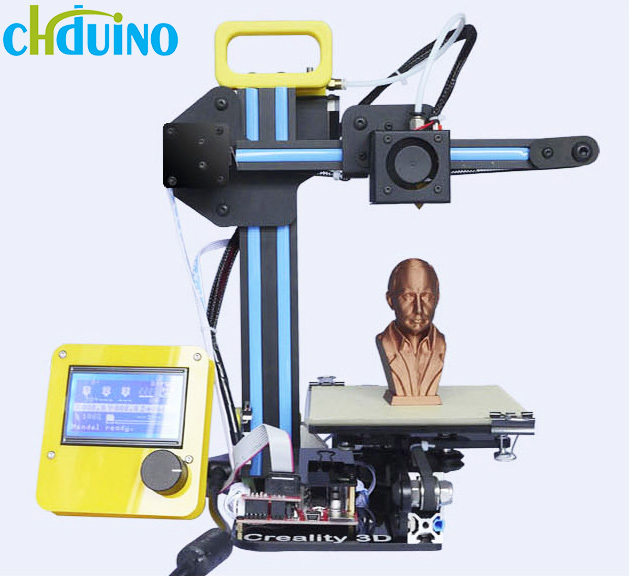
Overall, for precise 3D printing, the Form 3 is one of the highest resolution and quality 3D printers out there.
Ultimaker S3
- Price: $3,850 – Available on Dynamism Store here / Available on Matterhackers here
- Build volume: 230 x 190 x 200 mm
- Type of 3D printer: FDM 3D printer & dual extruder 3D printer
- Minimum layer height: 20 microns
Smaller, but every part as technically brilliant as the S5, the Ultimaker S3 is capable of incredible 20-micron layer heights that are so small you’ll struggle to see them. Though this slows down print time by increasing the number of layers in a part, the resulting model will have unmatched quality compared to almost any other FDM printer.
As well as the fantastic precision, the Ultimaker S3 is also a dual extruder 3D printer, allowing for the production of precise, multi-colored or multi-material 3D prints, and as a result is used heavily in creating architectural building model prototypes before building work begins.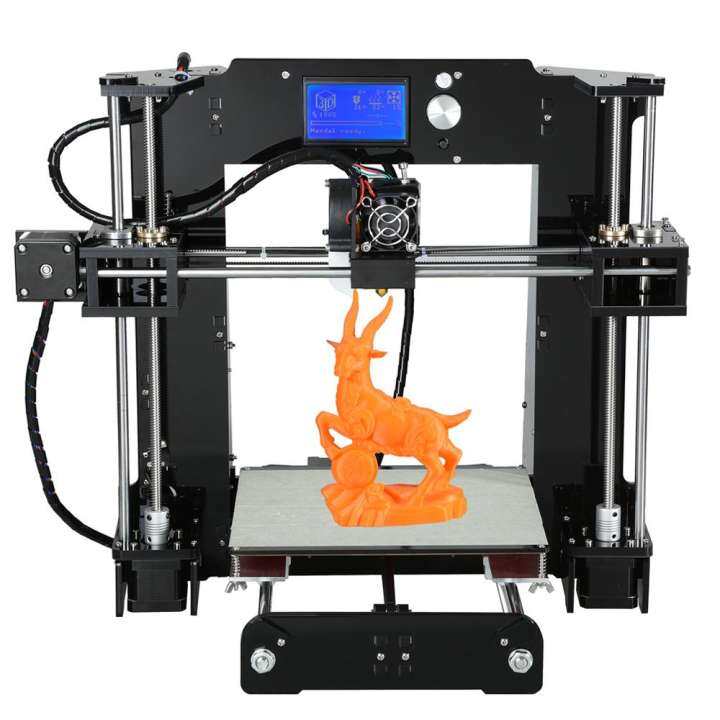
- For those interested in architectural model production, view our ranking of the best architecture software.
The printer is easy to use, easy to print with – Ultimaker also own Cura, the most popular 3D slicer – and offers fantastic 20-micron precision with a wide variety of materials compatible, including carbon fiber. Overall, the printer speaks for itself, and proves itself as one of the best high resolution 3D printers in FDM.
Credits: featured image source: flashforge-eu.com.
Advantages of a High Resolution 3D Printer
- Better quality: high resolution makes for smoother surface finishes, with great details and aesthetics on parts.
- The only way to get fine details: models that have arches and sharp diagonal details can look very jagged in higher layer heights, with low resolution 3D printers unable to adequately print these details.
Disadvantages of an accurate 3D printer
- Perfect settings required: increased precision requires perfect calibration, the perfect temperature settings to avoid imperfections in the filament or resin, and the right heated bed temperature and adhesion on the print bed.
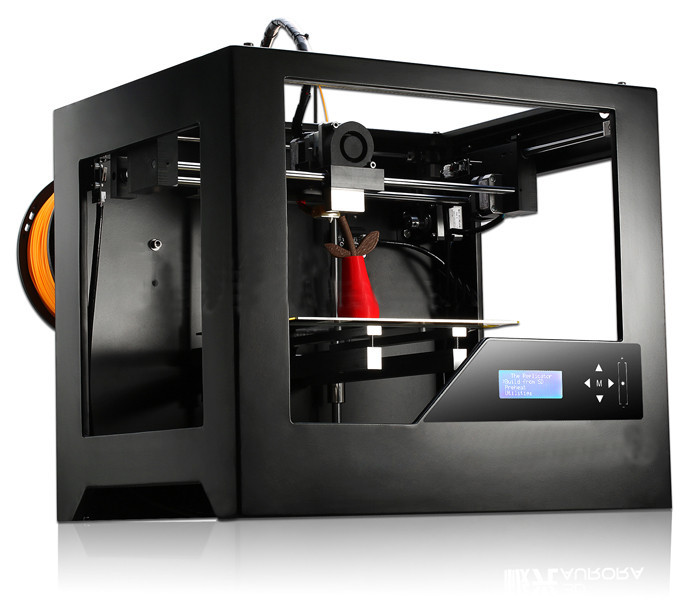 Any errors here can create imperfections in the print.
Any errors here can create imperfections in the print. - Much slower: printing with 25-micron layer heights takes four times as long as 100-micron layer heights, as four 25-micron layers equal the height of one 100-micron layer. For large and complex models, prints can take days.
- Higher chance of print failure: the more layers a model has, the more opportunities there are for errors to occur – which could render the part useless.
High-Resolution 3D Printing Technologies
Some 3D printing technologies considered high-resolution include:
FDM – Fused Deposition Modeling
FDM, or Fused Deposition Modeling, is the most popular and common technology used for high-resolution printing. The process involves depositing melted filament in layers on a fixed build platform using a heated extruder to create models. FDM falls on the lower end of the high-res spectrum and is generally favored as a low-cost alternative to more expensive technologies.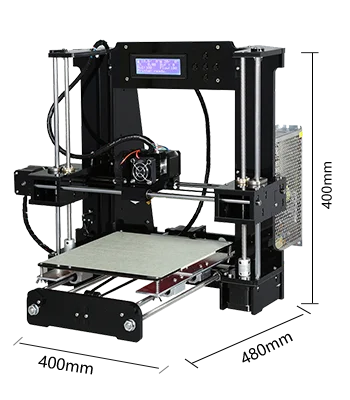 FDM printers commonly offer resolutions in the 50 to 200 microns range.
FDM printers commonly offer resolutions in the 50 to 200 microns range.
Resin (SLA, DLP, LCD)
Photopolymerization, commonly known as resin 3D printing, involves projecting a laser or light source to cure liquid light-sensitive resin into layers. Specific technologies include Stereolithography (SLA), Low Force Stereolithography (LFS), Masked Stereolithography Apparatus (MSLA), and Digital Light Processing (DLP). Resin printers commonly hit layer resolutions as low as 25 to 35 microns.
MJF – Multi Jet Fusion
Multi-Jet Modeling, or Material Jetting, uses inkjet print heads to jet melted materials layer by layer to create a 3D part or model. Expensive and highly accurate, MJF printers are the reserve of large businesses with deep coffers.
PolyJet – Photopolymer Jetting
Printers that employ PolyJet, or Photopolymer Jetting, rely on layers of photo-sensitive liquid photopolymer resin jetted via print heads then cured thanks to a UV light source to create prints.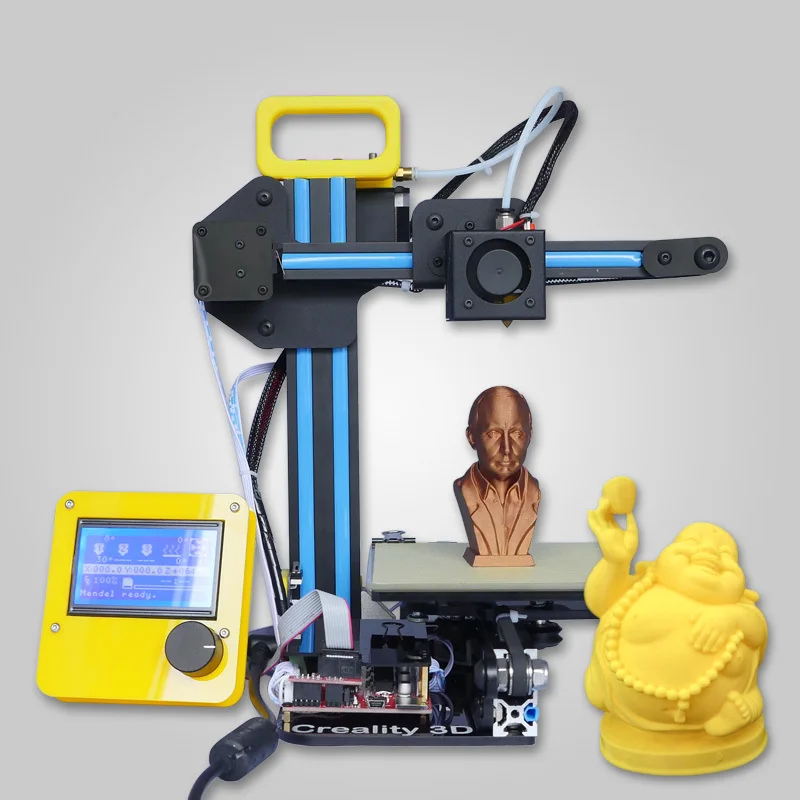 Much like MJF, PolyJet involves considerable expense, although the printers are generally smaller in size.
Much like MJF, PolyJet involves considerable expense, although the printers are generally smaller in size.
High-Resolution 3D Printer FAQs
Are High-Resolution 3D Prints Stronger?
No, the opposite. As a general rule, thicker layers (or a lower resolution) generate tougher results. This is because they minimize the number of contact points between layers. Fewer layers interfacing with one another means a lower likelihood of bond strength issues.
But, print strength relies on many factors, including layer adhesion and height, extruder and bed temperature, material quality and type, and the printing technology employed. A definitive answer is more related to the specific printer than the resolution. A capable device, like any of the best high-resolution 3D printers, produces reliable parts at higher resolutions.
What Is High-Resolution 3D Printing?
The answer varies greatly depending on who you ask. For the sake of simplicity, high-resolution 3D printing is best described as the process of printing parts with higher overall quality – whether that be smoothness, finish quality, detail, or model accuracy – than you’ll typically find in the 3D printing space.
For the sake of simplicity, high-resolution 3D printing is best described as the process of printing parts with higher overall quality – whether that be smoothness, finish quality, detail, or model accuracy – than you’ll typically find in the 3D printing space.
What Can You Do With a High-Resolution 3D Printer?
High-resolution 3D printing suits a vast swathe of applications. In the commercial field, companies favor high-resolution printing in areas such as dentistry, jewelry, biomedicine, and all manner of functional prototyping where precision is critical. In the hobby space, makers turn towards high-resolution printing for projects that require fine detail, such as figurines, modeling, and other decorative pieces.
What Effect Does 3D Print Resolution Have on Speed?
Higher resolutions decrease speed.
Print speed relates to how fast a printer deposes each layer.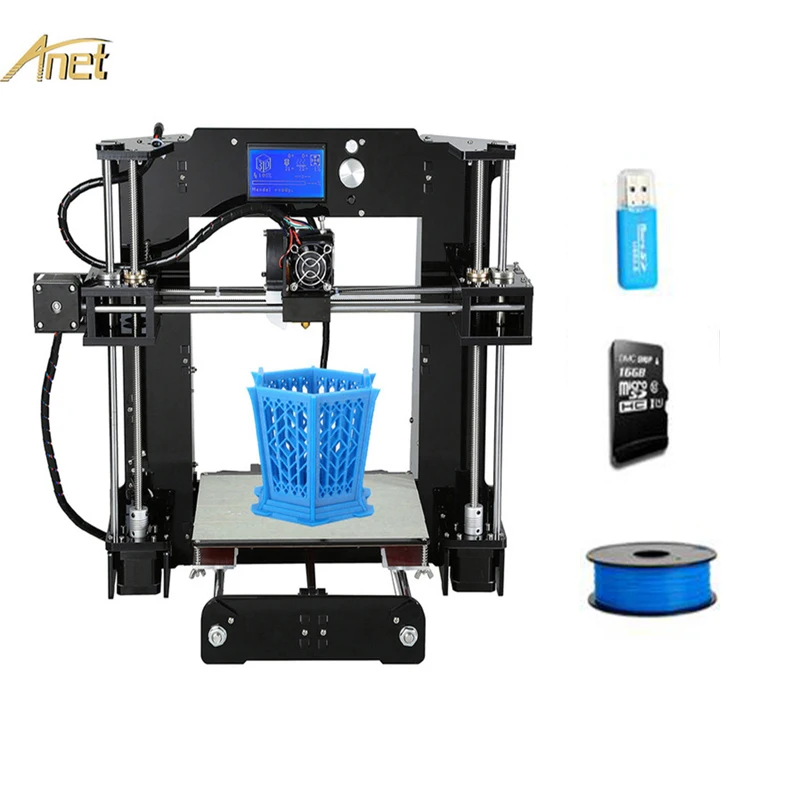 Since high-resolution printing is synonymous with thinner layers, the print speed is generally slower than lower-res printing. High-resolution 3D printing sacrifices print speed in favor of accuracy. Exact timings depend on the desired resolution, the technologies underpinning the printer in use, such as resin or MJF, and the complexity of the model.
Since high-resolution printing is synonymous with thinner layers, the print speed is generally slower than lower-res printing. High-resolution 3D printing sacrifices print speed in favor of accuracy. Exact timings depend on the desired resolution, the technologies underpinning the printer in use, such as resin or MJF, and the complexity of the model.
We also have an article about how to maximize dimensional accuracy and precision in 3D printing.
3D Printing Technologies - FDM, FFF, SLA, DLP, PolyJet, CJP, SLS, SLM
FUSED DEPOSITION MODELING PRINT TECHNOLOGY – + FDM
One of the most popular, simple and cheap 3D printing technologies is Fused Depsition Modeling. The technology was invented more than 20 years ago and implemented by Stratasys, and still it remains the most popular. The principle of building a prototype using this method is simple and clear. The simulated 3D object in STL format is transferred to the 3D printer software.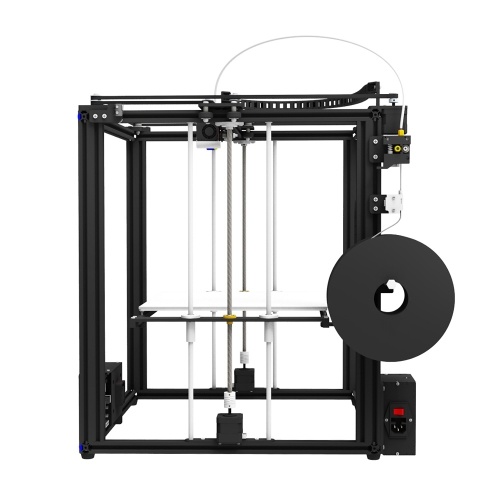 After placing the model in a virtual working chamber (automatically or manually), cutting the model into horizontal layers, the 3D printing process begins. The extruder print head melts the filament, laying down layer by layer according to the model data. If necessary, before starting printing, auxiliary structures (supports) are automatically or manually placed on a virtual 3D model, which, after printing, can be removed with a special solution or manually.
After placing the model in a virtual working chamber (automatically or manually), cutting the model into horizontal layers, the 3D printing process begins. The extruder print head melts the filament, laying down layer by layer according to the model data. If necessary, before starting printing, auxiliary structures (supports) are automatically or manually placed on a virtual 3D model, which, after printing, can be removed with a special solution or manually.
There are many types of equipment that print using this technology. They differ in terms of accuracy, the number of print heads, the size of the working platform, the presence or absence of a closed working chamber, consumable options, etc. There are models that support the ability to use different materials when printing. There are also industrial FDM 3D printers and personal ones.
The following materials can be used in FDM 3D printing:
- ABS
- PLA
- SBS plastic
- Nylon
- Polycarbonate
- HIPS support material
- PVA support material
- PETG plastic
- FLEX rubber-like plastic
- RUBBER plastic with rubber properties
The most popular materials are ABS and PLA. Products printed using FDM technology are characterized by elasticity, strength and stable physical characteristics, depending on the selected material. The construction accuracy varies from 0.027mm to 1mm. As a rule, the printed object has a layered (ribbed) surface, the severity of which depends on the thickness of one layer. This effect can be eliminated by post-processing with chemicals or grinding.
Products printed using FDM technology are characterized by elasticity, strength and stable physical characteristics, depending on the selected material. The construction accuracy varies from 0.027mm to 1mm. As a rule, the printed object has a layered (ribbed) surface, the severity of which depends on the thickness of one layer. This effect can be eliminated by post-processing with chemicals or grinding.
The advantages of FDM 3D printing technology include sufficient speed and ease of manufacture of products, safety, high accuracy, a wide choice of materials, as well as ease of use and maintenance of equipment. In addition, consumables for printing in this way are affordable. All this together makes this technology the most highly competitive and affordable in economic terms.
FDM 3D printing technology can be used for rapid prototyping and even small series production. Depending on the selected consumable material, this technology can be used to create parts of mechanisms, toys, interior items, jewelry, souvenirs and much more.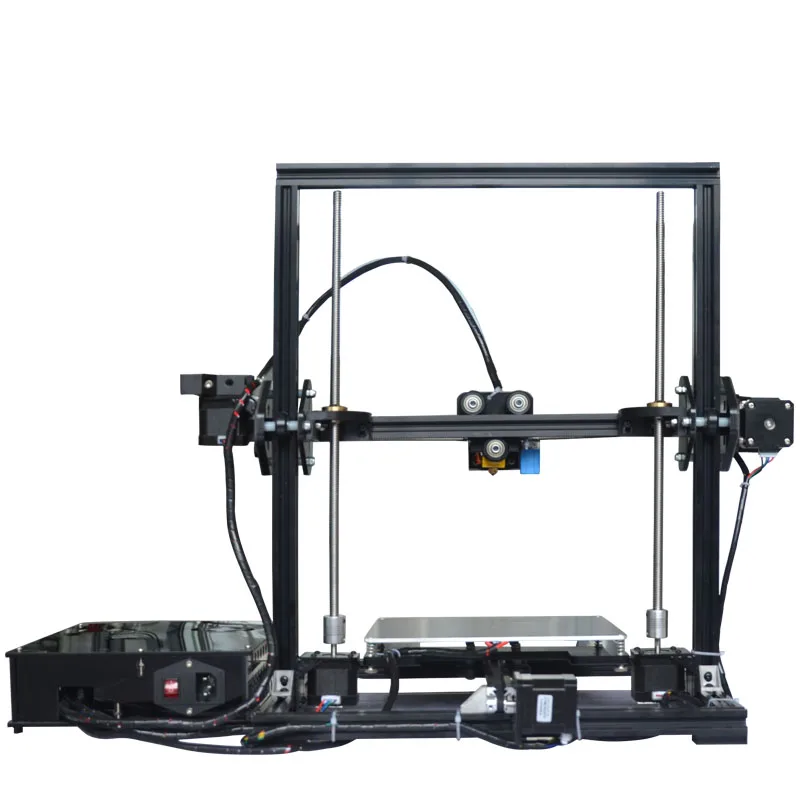 The use of high-strength engineering thermoplastics makes it possible to apply this 3D printing method to products used in the aerospace industry.
The use of high-strength engineering thermoplastics makes it possible to apply this 3D printing method to products used in the aerospace industry.
Our company has several 3D printers working on this technology. You can order high-quality 3D printing using FDM technology from us with any of the available materials and in any available color option. We guarantee you the quality and efficiency of order execution of any degree of complexity.
To order 3D printing using FDM technology, you need to send us a file in STL format. Trust our professionalism and take advantage of the most affordable 3D printing.
STEREOLITHOGRAPHY PRINT TECHNOLOGY – + SLA
SLA 3D printing technology or laser stereolithography is based on the layer-by-layer curing of a liquid photopolymer under the action of a laser beam. The technology was invented in 1986 by Charles W. Hull, who founded 3D Systems, which manufactures 3D printers that print using this technique.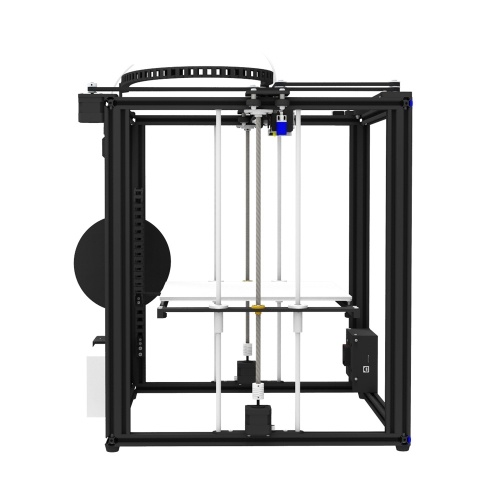
Photopolymer, which in this case acts as a consumable, is a resinous substance that changes its properties under the influence of ultraviolet radiation - it polymerizes and hardens. In this case, the wavelength and time of exposure to radiation will depend on the environmental conditions and the specific material.
The principle of building a model using laser stereolithography technology at the initial level is similar to any other - the modeled object in STL format is loaded into the 3D printer software, placed in a virtual working chamber and cut into layers. Photopolymer resin is poured into a special container. It contains a working platform on which the part will be built. Initially, the working platform is set so that it is covered with the thinnest layer of photopolymer (0.05-0.13 mm). This will be the size of the layer when printed. Then the laser is turned on, it irradiates the areas that will later become parts of the finished product. As a result of irradiation, the material hardens and the working platform sinks to the extent of the layer.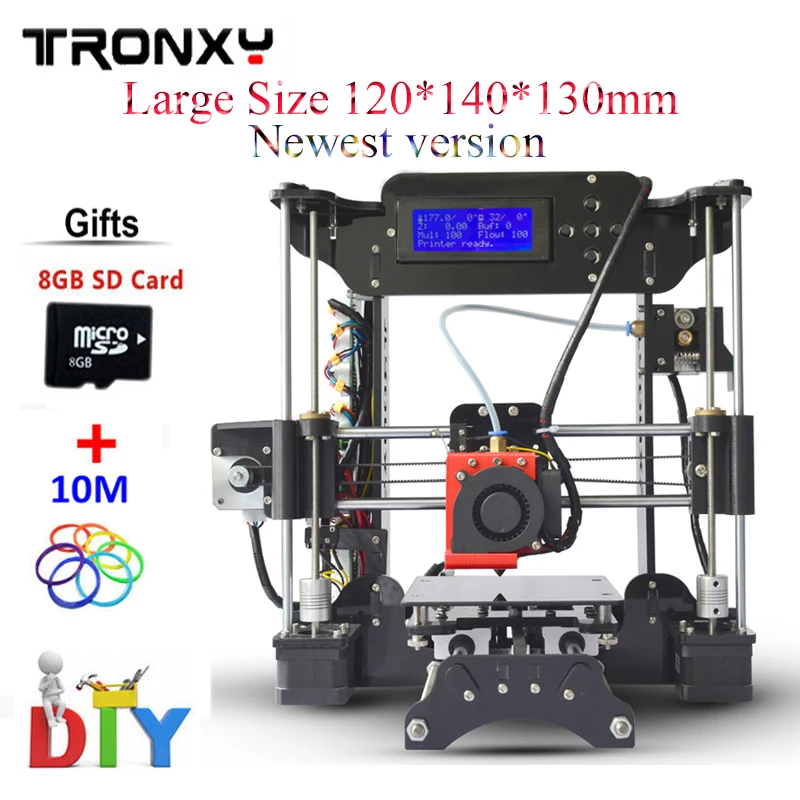 The algorithm repeats again until all programmed layers are exhausted. Then the finished product is immersed in a special bath, into which a composition is poured to remove excess elements. And at the end, the product is again irradiated so that it gains maximum strength.
The algorithm repeats again until all programmed layers are exhausted. Then the finished product is immersed in a special bath, into which a composition is poured to remove excess elements. And at the end, the product is again irradiated so that it gains maximum strength.
Stereolithography, like most other 3D printing technologies, requires support. After printing is completed, they are removed manually.
The main advantages of stereolithography technology are the highest precision and the ability to create the smallest and thin-walled objects. The technique is distinguished by easy post-processing of products and their almost perfect surface. The disadvantage of this technology is the impossibility of using several materials at once. Color printing is also not possible. The properties of the model and its color will determine the initial characteristics of one photopolymer. In addition, the cost of such printing and equipment is not cheap.
Due to the fact that stereolithography allows you to get a model of almost any degree of complexity, the main scope of this 3D printing is research.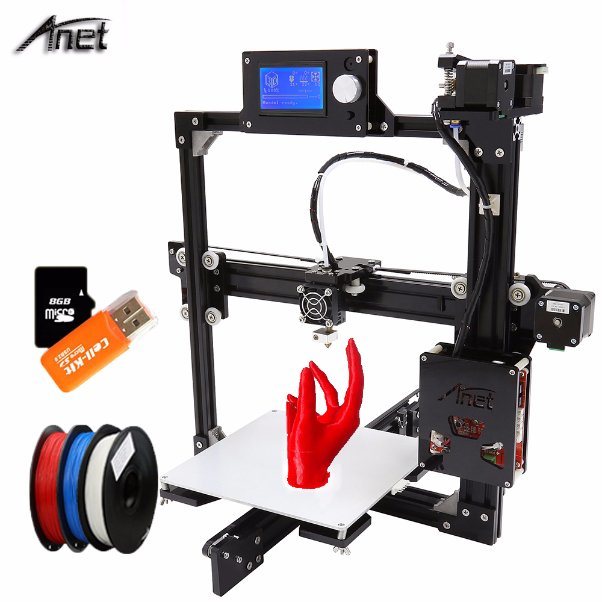 And due to the highest accuracy and detail, this technique is used in medicine, in particular in dentistry. Also, printed models are in demand in art, jewelry, museum work and restoration. There are photopolymers that can be used to print molded models. The model printed on a 3D printer, in this case, is poured with molding sand and placed in an oven for annealing at a temperature of 1000 degrees. As a result, the polymer burns out without leaving a trace, and the resulting form can be used for pouring metal under vacuum. As the metal cools, the mold breaks and the metal part is removed.
And due to the highest accuracy and detail, this technique is used in medicine, in particular in dentistry. Also, printed models are in demand in art, jewelry, museum work and restoration. There are photopolymers that can be used to print molded models. The model printed on a 3D printer, in this case, is poured with molding sand and placed in an oven for annealing at a temperature of 1000 degrees. As a result, the polymer burns out without leaving a trace, and the resulting form can be used for pouring metal under vacuum. As the metal cools, the mold breaks and the metal part is removed.
In our company you can order 3D printing using SLA technology. We have in our arsenal professional 3D printers using this technology and a wide range of photopolymer resins with various characteristics for 3D printing. We guarantee you high quality and prompt execution of the order. To order 3D printing using the laser stereolithography method, you need to provide us with a file in STL format.
Get the most out of high-precision and highly detailed stereolithographic 3D printing.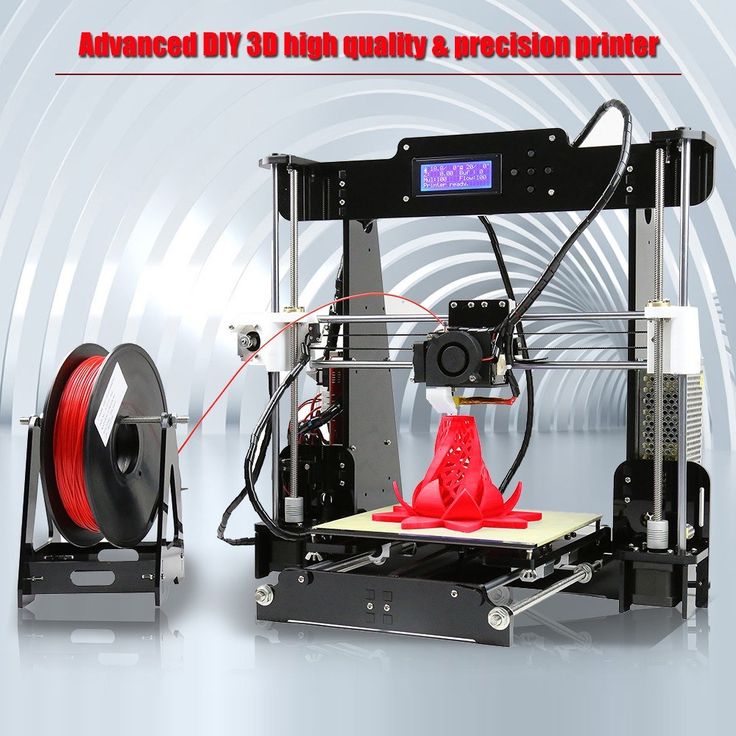
DIGITAL LIGHT PROCESSING PRINT TECHNOLOGY – + DLP
DLP 3D printing is one of the most accurate and fastest 3D printing methods. It is based on the technology that Larry Hornbeck invented for multimedia projectors. The peculiarity lies in the use of a special mirror matrix. Each individual pixel of this matrix is a microscopic mirror.
DLP stands for Digital Light Processing, which means "Digital Light Processing". Thus, this technology is one of the varieties of photopolymer 3D printing and photopolymer resin is used as a consumable. This resin is irradiated with projected light from the LEDs and hardens. The technology is very similar to stereolithography. However, with SLA 3D printing, each layer is, as it were, loomed with laser beams. And in DLP technology, the layer is completely projected onto a photopolymer using the same matrix with micromirrors, that is, this method is more like stamping.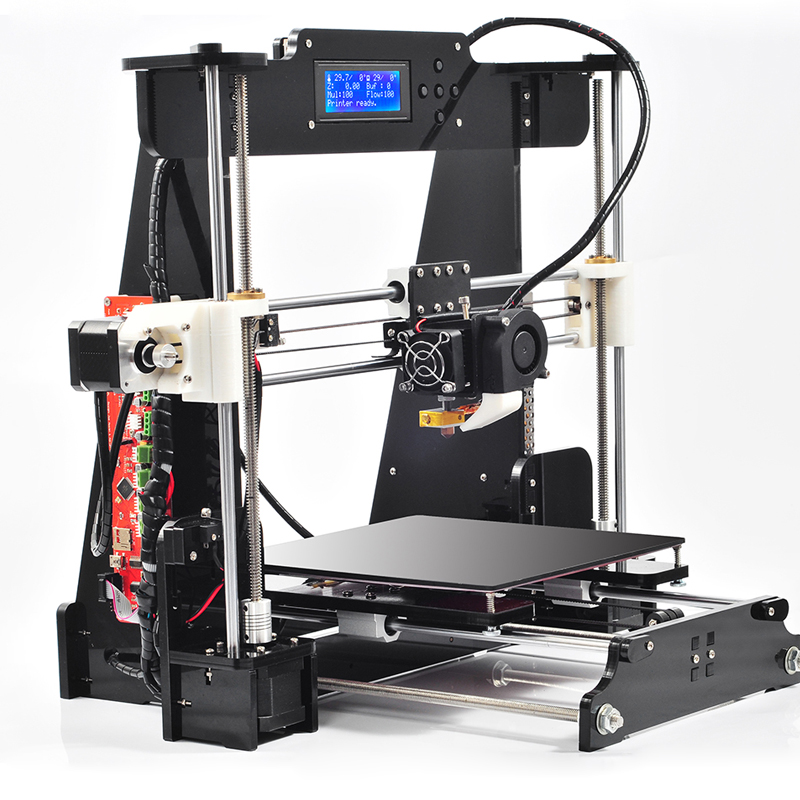 Thus, while maintaining the highest accuracy of 3D printing, it was possible to significantly increase its speed. At the moment, the speed of DLP printing is several times higher than FDM, SLM and SLA printing. For this reason, the DLP 3D printing technique is one of the most promising.
Thus, while maintaining the highest accuracy of 3D printing, it was possible to significantly increase its speed. At the moment, the speed of DLP printing is several times higher than FDM, SLM and SLA printing. For this reason, the DLP 3D printing technique is one of the most promising.
The thickness of one layer when printing using DLP technology is 10-15 microns, which is basically similar to the indicators for SLA 3D printing technology. For comparison, the FDM method implies a minimum thickness of at least 50 microns.
Since DLP printers are the main competitors of SLA printing, their application is about the same. They can print products for dentistry, jewelry, complex designs and even souvenirs. The technology is also in demand in the research area.
Photopolymers used in 3D printing with this method are diverse, and you can choose a material with the desired characteristics. For example, there are materials that mimic the properties of ABS plastic, hard engineering plastics, and even rubber. However, it is important to know that in some cases, under the influence of light, photopolymer products can crack and become brittle. This technology implies the impossibility of using several materials at once. Color printing is also not possible. The properties of the model and its color will determine the initial characteristics of one photopolymer.
However, it is important to know that in some cases, under the influence of light, photopolymer products can crack and become brittle. This technology implies the impossibility of using several materials at once. Color printing is also not possible. The properties of the model and its color will determine the initial characteristics of one photopolymer.
However, there is also a drawback to DLP technology - as in the case of SLA 3D printers, the cost of equipment is very high, as in principle the price of photopolymers. Not every, even a large company, can afford such a 3D printer.
But this does not mean at all that you will not be able to take advantage of the speed and advantages of DLP printing, because you have the opportunity to order 3D printing on such a 3D printer in our company. To do this, you just need to provide us with an STL file with the desired model. We guarantee you prompt execution of the order and high quality.
Enjoy high-quality, fast, high-precision DLP printing.
PRINT TECHNOLOGY LED DISPLAY – + LED
One of the varieties of DLP 3D printing technology is LED 3D printing. That is, this method is based on the same digital light processing (as Digital Light Processing stands for). However, in devices for LED 3D printing, instead of a mirror chipped matrix, there is an LED display that immediately highlights a whole layer on the material, like a kind of light stamp. Using an LED display allows you to increase the speed of 3D printing. So it takes about 10-15 minutes to 3D print 2.5 cm along the Z-axis, and it's really fast. Although the print speed in any case will directly depend on the thickness of one layer.
As a consumable material, a photopolymer resin is used, which polymerizes under the action of ultraviolet light, that is, it changes its qualities, passing from a semi-liquid state to a solid one. There are many options for photopolymers, among which there are materials that, after the polymerization process, imitate the characteristics of solid, including engineering plastics. There are also those that are very similar to classic rubber after hardening, that is, they have the same strength and elasticity indicators. You can also choose biocompatible photopolymers. When choosing a material for printing, you should be guided by the technical characteristics and scope of a particular photopolymer.
There are also those that are very similar to classic rubber after hardening, that is, they have the same strength and elasticity indicators. You can also choose biocompatible photopolymers. When choosing a material for printing, you should be guided by the technical characteristics and scope of a particular photopolymer.
Like any other photopolymer 3D printing, LED technology is characterized by the highest precision and detail. The thickness of one layer is only 10-15 microns. With its help, you can print thin-walled products, objects with complex geometry. Photopolymers practically do not shrink and do not change their geometry after hardening, and this is also an advantage, especially when it is necessary to print anatomically accurate models. The DLP LED 3D printing technology itself, although it provides for a layer-by-layer method for creating a model, still does not differ in pronounced layering of the finished model. The surface is almost perfectly smooth, requiring no additional processing.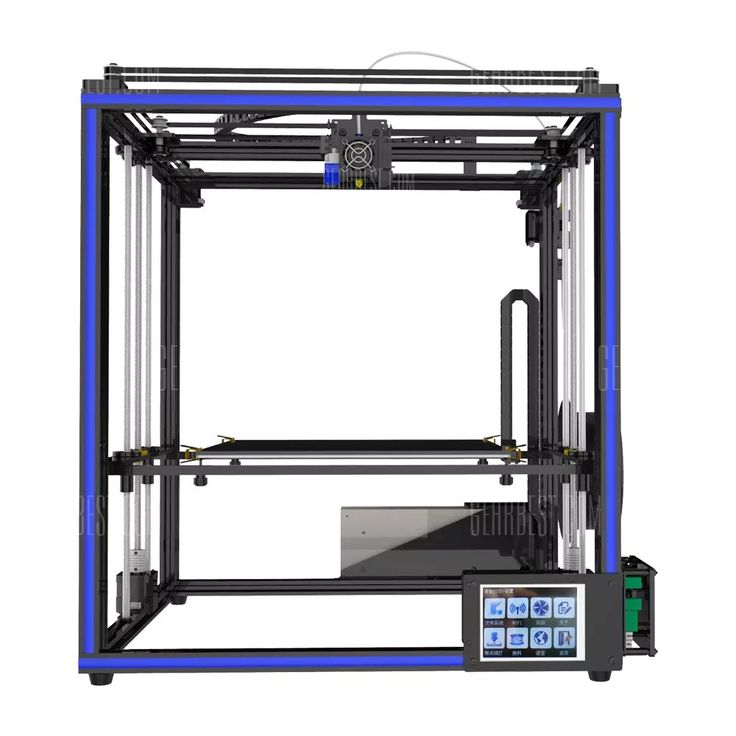
If complex objects are printed, support must be used. They can be set in automatic or manual mode immediately before printing during the positioning of the model in the virtual working chamber. These supports are subsequently removed manually.
LED technology implies the impossibility of using several materials at once. Color 3D printing is also not possible. The properties of the finished prototype and its color will determine the initial characteristics of the photopolymer used.
The field of application of LED 3D printing is basically the same as the field of use of DLP printing, since this technology is, in fact, its improvement. The technology is in demand in the production of hearing aids and earmolds, in dentistry and orthodontics, as well as in jewelry. Due to the high accuracy and detail of 3D objects printed using this technology, products will also be in demand in the field of research and engineering activities.
LED 3D printer is very expensive. However, this does not mean that its benefits are not available to you.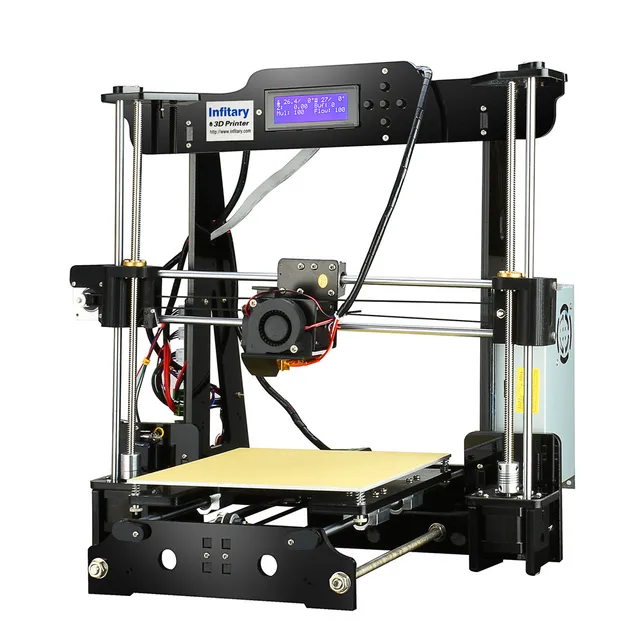 You can order 3D printing using LED technology in our company. We offer you a large selection of photopolymer resins for printing and guarantee the high quality of models, in full compliance with the provided STL-file, and the prompt execution of the order.
You can order 3D printing using LED technology in our company. We offer you a large selection of photopolymer resins for printing and guarantee the high quality of models, in full compliance with the provided STL-file, and the prompt execution of the order.
Take full advantage of LED technology with our help.
POLYJET PRINT TECHNOLOGY – + PJ
PolyJet is a revolutionary 3D printing technology that is a powerful tool for high performance additive manufacturing. The technique was invented and patented by Stratasys. The operation of a PolyJet 3D printer is very similar to a conventional, well-known inkjet printer, but printing is carried out not on paper and not with simple ink, but on a special substrate in the chamber, and an acrylic-based liquid photopolymer acts as a material.
The PolyJet-enabled 3D printer is equipped with a special print head with nozzles. There can be several printheads, which allows you to print faster and even prototyping several objects at once.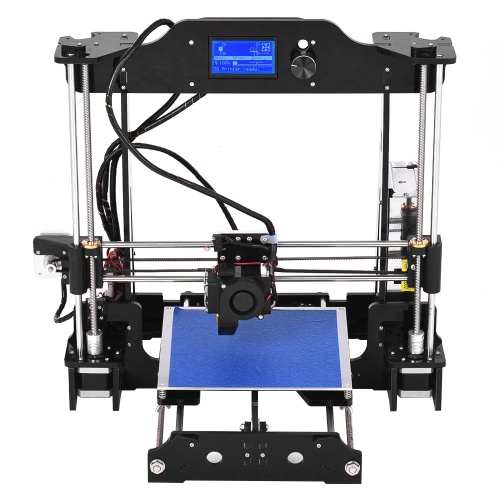 The printing process is carried out by dosed deposition of a photopolymer. One layer of 16 microns is sprayed at a time. Then this layer is exposed to an ultraviolet lamp and the photopolymer turns into a hard plastic. After that, the working platform with the substrate is lowered, and the algorithm is repeated again. When printing complex geometric shapes, a support material is used. For this technology, a special gel-like material has been created, which is easily removed with plain water or hands.
The printing process is carried out by dosed deposition of a photopolymer. One layer of 16 microns is sprayed at a time. Then this layer is exposed to an ultraviolet lamp and the photopolymer turns into a hard plastic. After that, the working platform with the substrate is lowered, and the algorithm is repeated again. When printing complex geometric shapes, a support material is used. For this technology, a special gel-like material has been created, which is easily removed with plain water or hands.
A key feature of PolyJet 3D printing technology is the ability to use multiple materials in one print run. At the same time, there are models of 3D printers that can mix photopolymers in various proportions, obtaining a variety of composite materials with certain characteristics. Also, this technology is characterized by the possibility of complex color reproduction. That is, it is possible to use color printing, the palette of which includes about 1000 colors and shades. In fact, it is the only additive manufacturing technology that supports these capabilities.
Other advantages of the method include: high printing speed, high accuracy and detail, perfect surface and generally excellent quality of printed objects. In addition, a wide range of materials allows you to create objects of almost any kind. More than 100 different photopolymer resins can be used as a base, mixing of which allows obtaining materials from transparent to completely opaque, from hard to elastic and rubbery. This is truly a new standard for realism in the most complex prints. PolyJet technology allows you to achieve perfect surface smoothness and imitate any even the most subtle texture. The camera of the PolyJet 3D printer is quite large, but if you need to print a large object, then it can be broken into parts, which are then simply glued together.
The only disadvantage of the technology is its high cost. The equipment is very expensive, and photopolymer resins are not cheap. But this does not mean that you cannot use this technology, because you have the opportunity to order 3D printing using PolyJet technology in our company.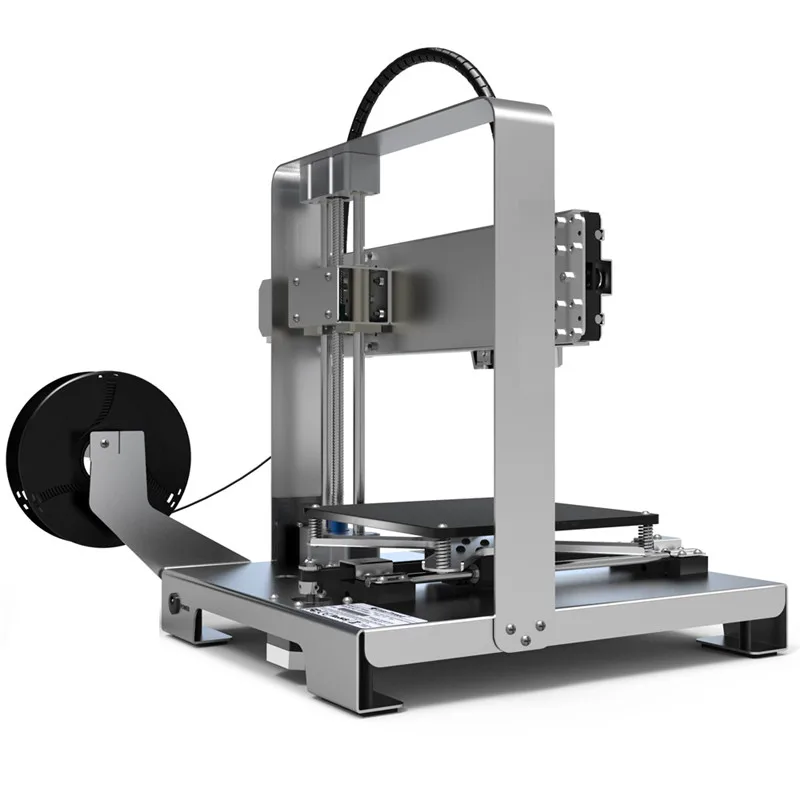 In a short time, we will implement your project on our own 3D printer. All you need is to provide us with the STL file.
In a short time, we will implement your project on our own 3D printer. All you need is to provide us with the STL file.
PolyJet 3D printing technology is truly limitless.
COLOR JET PRINTING TECHNOLOGY – + CJP
Color inkjet 3D printing - CJP (ColorJet Printing) technology - a patented technique invented by 3D Systems. It consists in layer-by-layer gluing and coloring of the powder gypsum composite. 3D printing of this type is based on a technique called 3DP, which is its improvement.
3D printing by this method is based on the use of two materials: base and binder. To create the base layer, a consumable of the main type is used. It consists of gypsum mixed with a polymer. And the binder is used for gluing and staining the layers.
ColorJet Printing 3D printer has two cameras. A gypsum composite is poured into one of them, and the second chamber is used to remove excess material.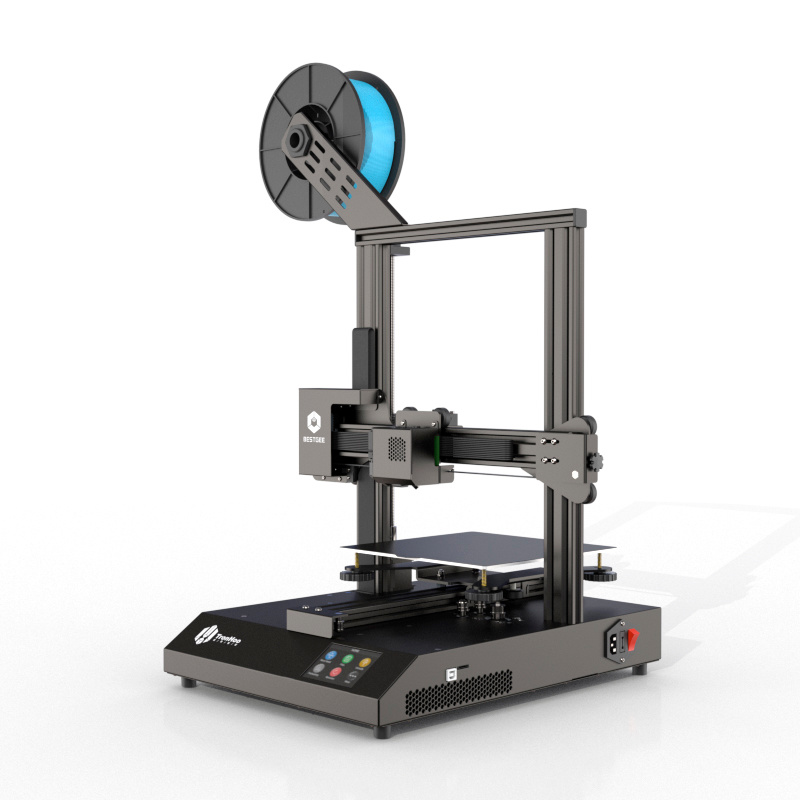 The model is "grown" in layers. A special roller distributes a thin layer of material on the working platform. The print head applies the adhesive and colors the main consumable particles. All this is carried out in accordance with the loaded mathematical 3D model. The working surface is lowered by the amount of the layer (0.1016 mm), and the roller again applies a layer of gypsum composite powder, and so on until the model is printed to the end.
The model is "grown" in layers. A special roller distributes a thin layer of material on the working platform. The print head applies the adhesive and colors the main consumable particles. All this is carried out in accordance with the loaded mathematical 3D model. The working surface is lowered by the amount of the layer (0.1016 mm), and the roller again applies a layer of gypsum composite powder, and so on until the model is printed to the end.
ColorJet Printing technology has a relatively low cost of printed models. Its advantage is the absence of the need for supports, since the non-glued material will act as supporting structures. In addition, the material that was not used during printing can be reused. It turns out that this method of additive manufacturing is waste-free.
The CJP technology is the only one that uses the CMYK printing color palette. This palette includes 390 thousand colors and shades. The material is dyed during the gluing of the layer, resulting in details with excellent color reproduction.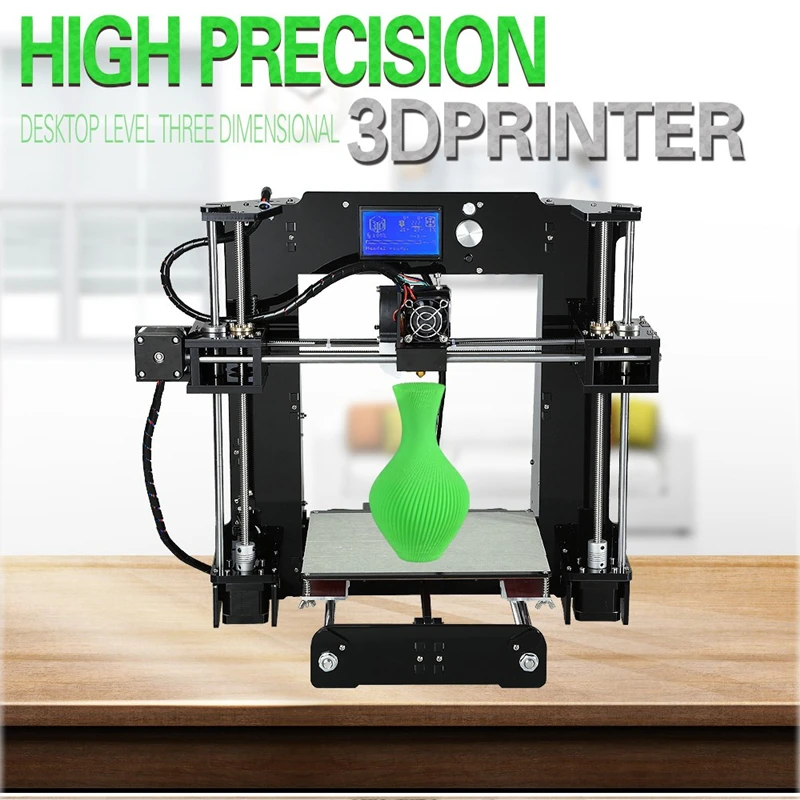
The accuracy of building a model by this method is very high, the minimum printed element has dimensions of 0.1-0.4 mm. The thickness of the walls of the prototype, which will not collapse under their own weight, is 0.102-0.089 mm.
Models printed using ColorJet Printing technology have a typical gypsum rough surface, characterized by a high degree of hygroscopicity. The strength of the models is average. However, finished models are easy to sand, paint and glue. To improve the characteristics of the model and protect them from moisture, you can cover the surface with varnishes, waxes, resins, as well as all kinds of fixatives.
The technology can be used for 3D printing of architectural models, product presentations, souvenirs, miniatures, etc. Despite the fact that the products are of low strength, they allow you to visually evaluate the prototypes.
CJP 3D printer has impressive dimensions and is quite expensive, despite the fact that the cost of printed prototypes is low, not everyone can afford such pleasure.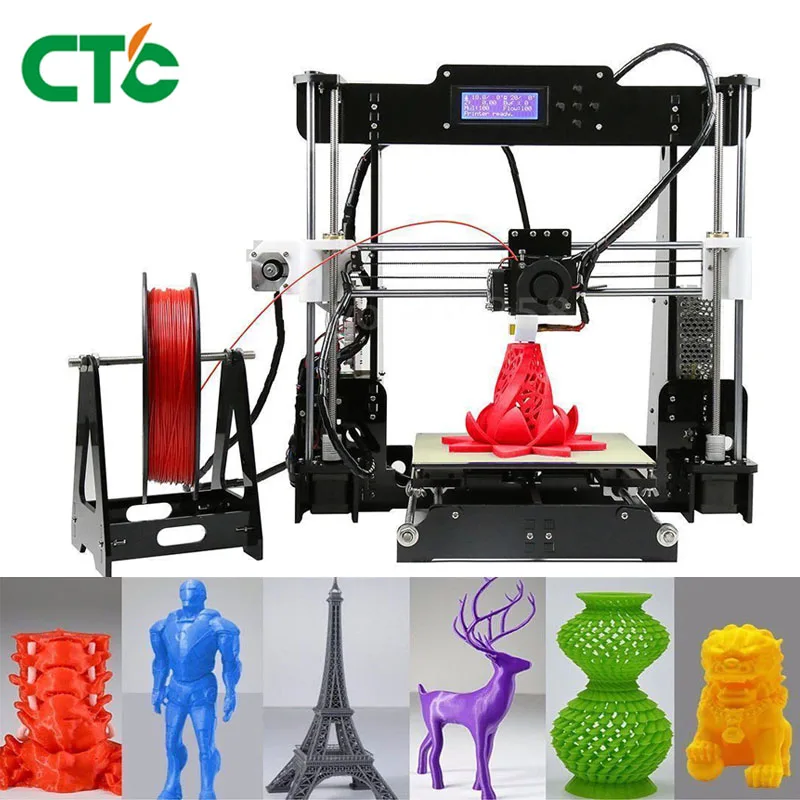 In our company, you can order 3D printing using ColorJet Printing technology. We guarantee you prompt execution of the order and full compliance of the prototype with the modeled object. All you need is to provide us with an STL file with a 3D model.
In our company, you can order 3D printing using ColorJet Printing technology. We guarantee you prompt execution of the order and full compliance of the prototype with the modeled object. All you need is to provide us with an STL file with a 3D model.
Take advantage of CJP 3D printing technology with our help and appreciate all its advantages in practice.
SELECTIVE LASER SINTERING PRINT TECHNOLOGY – + SLS
Selective, that is, selective, laser sintering is a 3D printing technology that was created back in 1979. However, for a long time it was not available to the market until DTM was created in 1996. In 2001, 3D Systems bought this company, and in 2014 the patent expired, and now this technology is available to a wide range of consumers.
The SLS 3D printing technique consists in the fact that the material is heated by a laser beam until the particles are sintered, that is, not completely.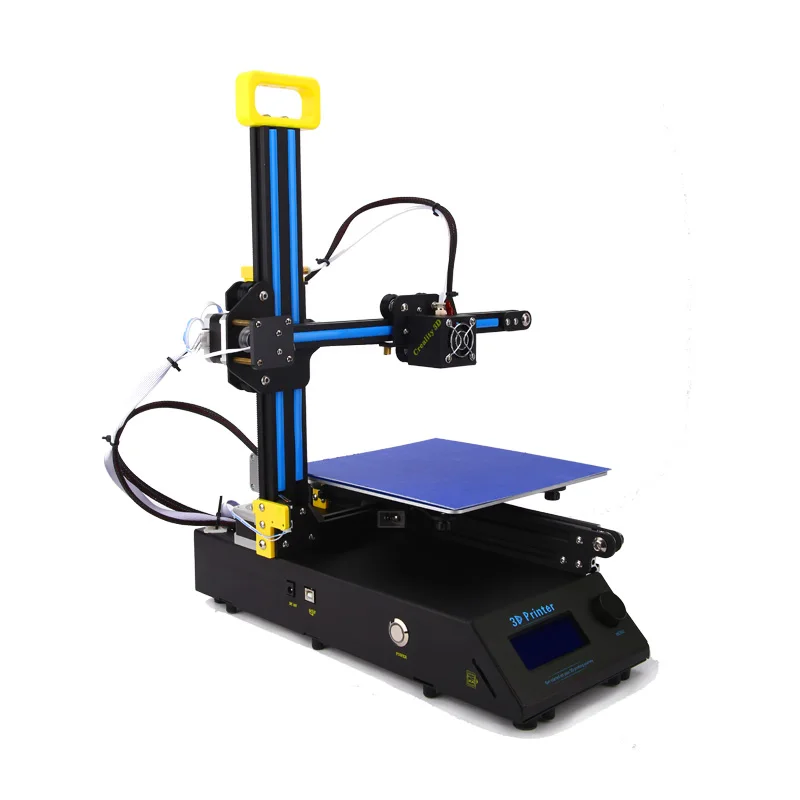 As a result, the model turns out not to be solid, but as if “sintered” from individual tiny particles. If we consider the structure under magnification, then individual particles of the material will be visible, as if glued to each other.
As a result, the model turns out not to be solid, but as if “sintered” from individual tiny particles. If we consider the structure under magnification, then individual particles of the material will be visible, as if glued to each other.
The operation of a 3D printer that prints using SLS technology is as follows. Powder material is poured into the chamber. A 3D model in STL format is loaded into the software. The working platform is exposed and a thin layer of material (thickness about 120 microns) is applied to it, leveled with a roller. The laser sinters the powder particles according to the loaded model. After the layer is completed, the platform is lowered and a new layer of material is applied. The procedure will be repeated until the very last layer is completed.
Since there is unused material in the working chamber, the need for supports simply disappears, because complex and overhanging parts will be supported by unused material. This allows you to get models of any, even very complex geometry.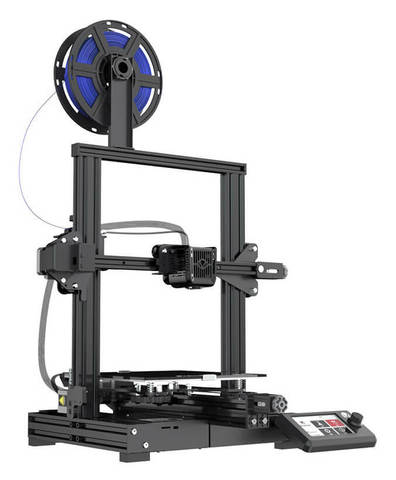
Powder polymers, metals and their alloys, ceramics, glass, composite materials can be used as consumables. But in any case, the material must be in powder form. Due to the fact that the power of laser radiation can be adjusted, the degree of melting of the material can change, and, accordingly, the strength and uniformity of the structure of the resulting model. Currently, the most popular material for 3D printing using SLS technology is polyamide. This is a versatile powder material that can be used in almost any field. If powdered metal is used for printing, it is preheated to make printing faster and easier.
As a result of 3D printing, models are obtained with a surface that requires processing, in particular grinding. Models made of polyamide are sensitive to moisture, so they must be coated with a protective compound, such as moisture-resistant paint, if outdoor use is planned.
Selective laser sintering shows excellent results when used in small-scale production, as well as for the manufacture of master models.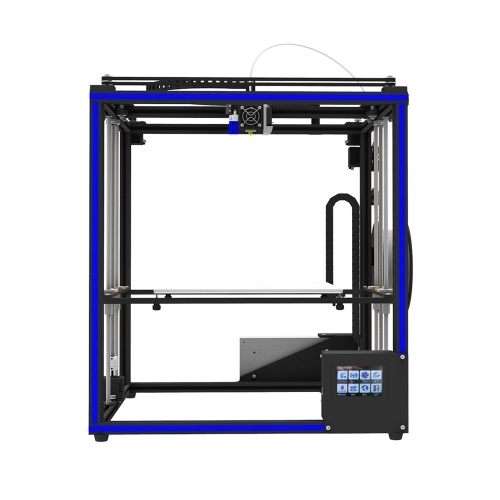 This 3D printing technology is in demand in the aerospace industry, in manufacturing, etc.
This 3D printing technology is in demand in the aerospace industry, in manufacturing, etc.
The disadvantages of SLS 3D printing technology are the high cost of equipment. In addition, the powder material is potentially harmful to the human body, so a separate room with air conditioning and an air filter is equipped for such 3D printers. All this imposes difficulties for additive manufacturing using this technique. But this does not mean that you cannot take advantage of the possibilities of selective laser sintering technology, because our company provides professional 3D printing services on such equipment. You can order 3D printing using SLS technology from us. All you need is to provide us with a file with a 3D model in STL format. We guarantee you high quality printing in full accordance with the provided 3D model.
SELECTIVE LASER MELTING PRINT TECHNOLOGY – + SLM
Selective (selective) laser melting - SLM is a 3D printing method from a mathematical CAD model, which is used to create 3D objects by melting metal powders.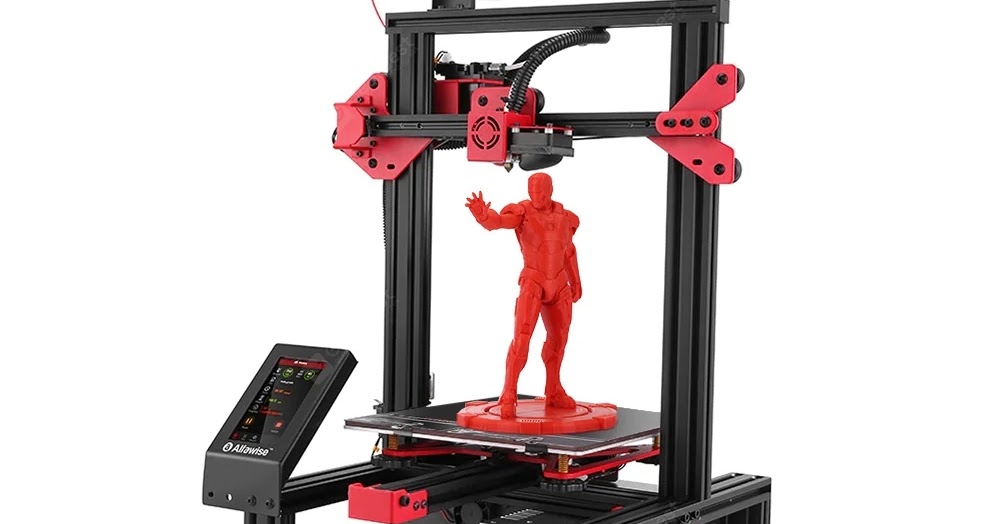 For this, high-power lasers are used.
For this, high-power lasers are used.
Using this technology, it is possible to create precise metal parts that will later be used in various units and assemblies, including non-separable structures that change their geometry during use. This type of printing is becoming more and more widespread, because the parts created by this method are in many ways superior in their mechanical and physical characteristics to products produced by traditional methods.
The advantages of 3D printing using SLM technology are: the ability to solve the most complex production problems, including in the aerospace industry, where parts and assemblies have a hard load and serious requirements are imposed. Also, SLM printing is used in experimental and scientific and technical activities, where it is possible to significantly reduce the R&D cycle, because the most complex mechanisms and products can be created without serious equipment.
The technology also allows you to print objects with internal cavities, which can significantly reduce the weight of products.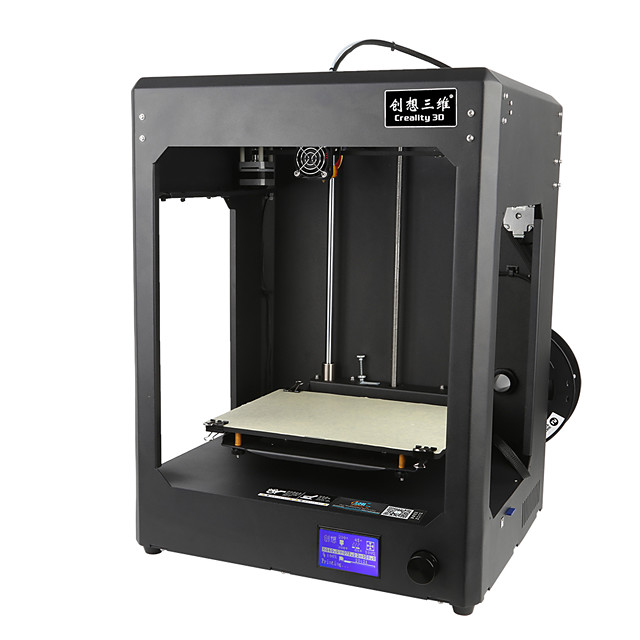
The essence of the method lies in the layer-by-layer application of metal powder on a special heated platform and its subsequent processing with a high-power laser, in accordance with the CAD model. The working chamber of the 3D printer, where the melting process itself takes place, is filled with argon or nitrogen. The choice of gas will depend on which consumable is selected for printing. Inert gas will be mainly consumed in preparation for printing, when the chamber is purged, because it is necessary to achieve conditions so that the percentage of oxygen in the chamber is no more than 0.15%. This is a necessary condition in order to avoid the oxidation of metals. Consumables can be: powdered metals and alloys. It can be tool or stainless steel, titanium and its alloys, aluminum, platinum, gold, as well as cobalt-chromium alloys.
The model is fused layer by layer. After the printing of the prototype is completed, it is removed from the chamber with the working platform and separated from it mechanically.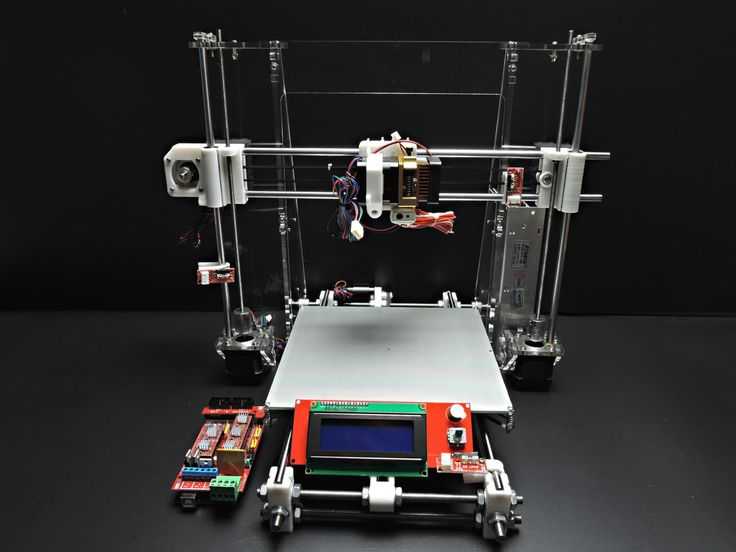 In the future, it may require processing, because the surface of the product may not be ideal. However, the product will be very strong and uniform in structure, similar to cast.
In the future, it may require processing, because the surface of the product may not be ideal. However, the product will be very strong and uniform in structure, similar to cast.
One of the advantages of the technology is its economy and non-waste. After all, unsintered material can be reused. The thickness of one layer is 20-100 microns. Thus, SLM 3D printing is a very precise and highly detailed additive manufacturing technique.
The cost of 3D printers using this method is very high. And in general, their operation is by no means a simple matter, requiring special conditions. But you have a great opportunity to use 3D printing using selective laser fusion technology with the help of our company. All you need is just to order 3D printing using this technique in our company. To do this, you need to provide us with an STL file with a CAD model for printing.
Take advantage of the innovative method of creating high-precision metal products - SLM printing.
ELECTRON BEAM MELTING PRINT TECHNOLOGY – + EBM
One of the most reliable metal 3D printing methods is EBM printing or electron beam melting.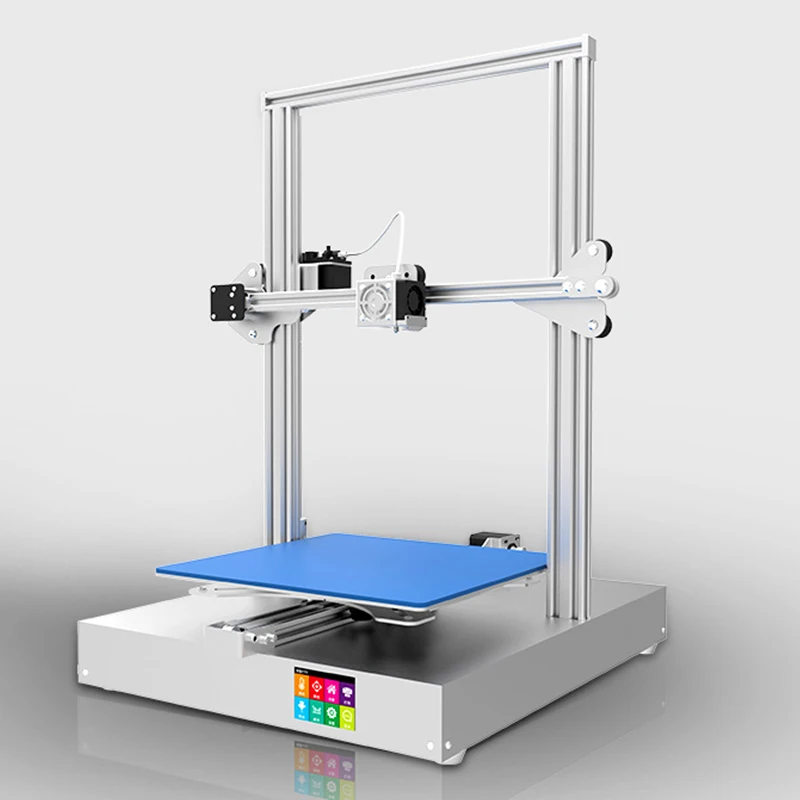 This is an additive manufacturing technology that is used to create high-strength, comparable to cast, metal products. Pure (without impurities) metal powder acts as a consumable. Printing is carried out in a vacuum chamber, which minimizes the oxidation of the material, such as pure titanium.
This is an additive manufacturing technology that is used to create high-strength, comparable to cast, metal products. Pure (without impurities) metal powder acts as a consumable. Printing is carried out in a vacuum chamber, which minimizes the oxidation of the material, such as pure titanium.
Electron beam melting is very similar to SLS 3D printing technology, that is, selective laser melting. However, it does not use powerful lasers, but electron emitters, which serve as sources of powerful energy used to melt metal. So-called electron guns fire high power electron beams that fuse metal powder. The method is similar to other 3D printing methods - the layering of consumables. A layer of metal powder is applied, and electron beams, following the contour of the model, fuse the material. Then the algorithm is repeated again until all layers are created and a finished three-dimensional object is obtained in accordance with the mathematical 3D model.
As a result of such 3D printing, a high-density metal model is obtained, and the porosity of the structure is absent.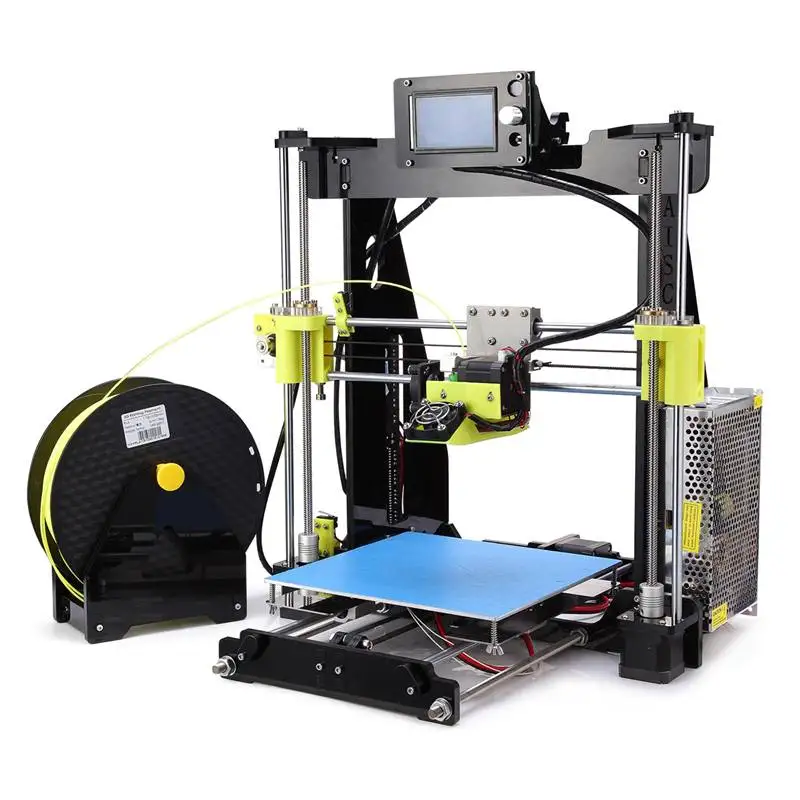 This means that additional processing by the method of firing for a strong fusion of the material in the model is not required. And the model itself will have high strength characteristics initially, that is, it will not differ in any way from cast products.
This means that additional processing by the method of firing for a strong fusion of the material in the model is not required. And the model itself will have high strength characteristics initially, that is, it will not differ in any way from cast products.
Electron beam melting is printed at high background temperatures of 700-1000 degrees Celsius. This avoids a strong temperature difference between the already cooled printed layer and the fresh hot layer. Therefore, printed parts will not suffer from residual mechanical stress. This is how the highest possible strength of EBM-printed products is achieved.
This 3D printing technology is used to create high-precision titanium prostheses and implants, such as hip and knee implants, skull parts, etc. Titanium combines strength and biocompatibility.
EBM printing is also used in the aerospace industry. With the help of this technology, load-bearing structural elements of various devices (aircraft, rockets), as well as parts of their engines, are printed.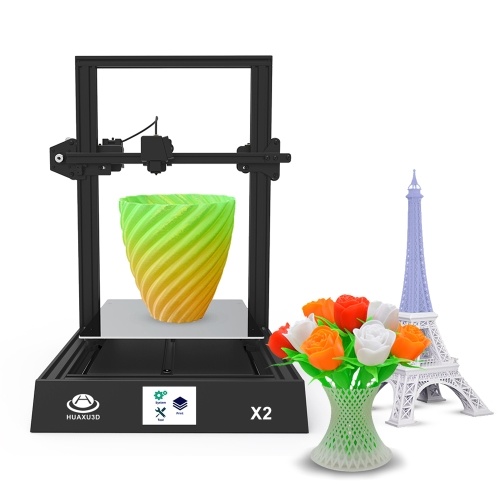 For this purpose, strong and light powder metals are used.
For this purpose, strong and light powder metals are used.
EBM printing equipment is very expensive. However, you can order 3D printing using the technology of electron beam melting of powder metal. We are ready to fulfill your order in the shortest possible time, and we guarantee the high quality of printed products, in full accordance with the provided STL file.
Take advantage of high-precision and high-strength metal 3D printing - electron beam melting (EBM).
Sharebot optimizes race bike design
The idea behind 3D printing is based on its technological features (such as customization and object reproducibility) that allow the development of innovative racing bike solutions. Motorcycle racing is a highly competitive field where even the smallest detail can affect the result and lead you to victory.
Andrea Pirazzini, founder and director of 3D service provider Help3D, has a passion for racing and competes in the Velocità CNV Motoasi Italian Championship for 100 octane pit bikes.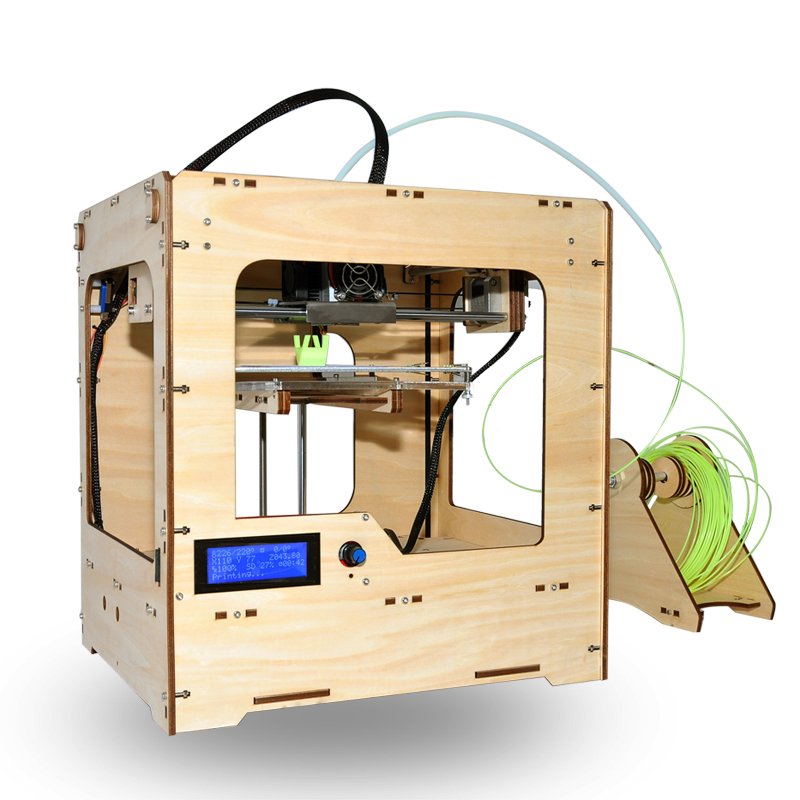 In Andrea's opinion (and we fully agree with him), The advantage of additive technologies is the ability to create unique shapes from technical materials - this is exactly what you need to work on prototypes and models of racing motorcycles.
In Andrea's opinion (and we fully agree with him), The advantage of additive technologies is the ability to create unique shapes from technical materials - this is exactly what you need to work on prototypes and models of racing motorcycles.
Another great advantage of 3D printing, according to Andrea, is the variety of materials that can be used. The world of additive manufacturing is constantly evolving and there is a need to develop technical materials with advanced performance characteristics to create better and more efficient parts. That is why 3D printing can be applied to any manufacturing process, streamlining and streamlining prototyping.
Andrea has already used a Sharebot 3D printer to print plastic prototypes for racing bikes and has worked with the Quarto di Litro team at the University of Pavia on concept bike parts.
All parts were made on Sharebot Q and Sharebot 42 3D printers (modified version - Sharebot 43). For example, a multi-component fork assembly that was printed on the Sharebot 42 in just 20 hours using PLA plastic, or gaskets and links made from thermoplastic polyurethane (TPU).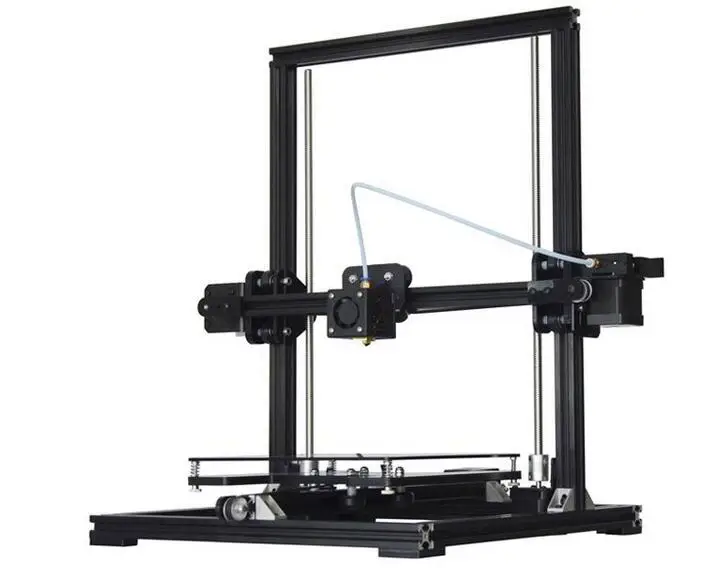 The choice of these elastic materials is due to the high load that they must withstand. The printed part was tested and no problems were found as a result.
The choice of these elastic materials is due to the high load that they must withstand. The printed part was tested and no problems were found as a result.
One of the most interesting prototypes is a pitbike body printed in 1:1 scale (23 hours of work). Thanks to 3D printing, Andrea Pirazzini was able to reproduce every technical and aerodynamic detail with the highest precision and resolution. He also created the air intake and spigot from high-strength polybutylene terephthalate (PBT).
3D printing and motorcycle racing: when every detail counts
MotoGp is the world championship of road racing, the premier competition in its class. At an event of this caliber, every detail counts, and the bike's continuous optimization helps the rider lap a few precious tenths of a second faster.
We used to think that only a better motor is enough for more speed, but in reality it is not so simple. Over the last few years at MotoGp, motorcycles have been getting aerodynamic fenders on the front of the fairing: at first they were thought to be just a beautiful accessory, but over the years fenders have become the basis of motorcycle aerodynamics, especially because they increase downforce, and therefore traction on asphalt, and also reduce the resistance to movement during acceleration.
Drilling templates
In preparation for the next racing season, the famous Italian racing motorcycle manufacturer Aprilia, using Sharebot 3D printers and Help3D technical support, has developed drilling templates for the motorcycle front fairing. The 3D template models were created directly from the fairing CAD models and then printed using the Sharebot QXXL and Sharebot 42 printers. It should be noted that the shape of the wings (made of carbon fiber) is adapted to the fairing, so it is important that the holes in the body provide a snug fit at an ideal angle.
Footpeg mount
It's no secret that a motorcycle rider must sit like a glove. It's not just about a comfortable posture, but also about optimizing the rider's aerodynamics on the bike.
The kickstand plays a vital role in rider's riding position: it is more rearward and higher than in a road bike. If it is the wrong size, then the rider may feel discomfort, and in this position he will be uncomfortable.
Sharebot's 3D printers allowed the Aprilia Racing team to create a series of PLA footpeg mounts to see which model would work best for the team's riders. After analyzing different solutions and selecting the ideal model for each rider, the parts were made on a CNC milling machine.
With this solution, Aprilia has been able to reduce the design time and, above all, the production costs for each footpeg, while at the same time creating the optimal model for each rider.
Air intake
The performance of an engine is also very dependent on how and how efficiently it "breathes". Sizing an air intake for a MotoGp requires careful study of the flow and turbulence created within the design. The air intake uses lightweight and ultra-strong carbon fiber. The downside is that the part requires a mold to make: thin sheets of carbon fiber pre-impregnated with epoxy are placed in a mold and then placed in an autoclave to complete the catalysis process and eliminate air bubbles.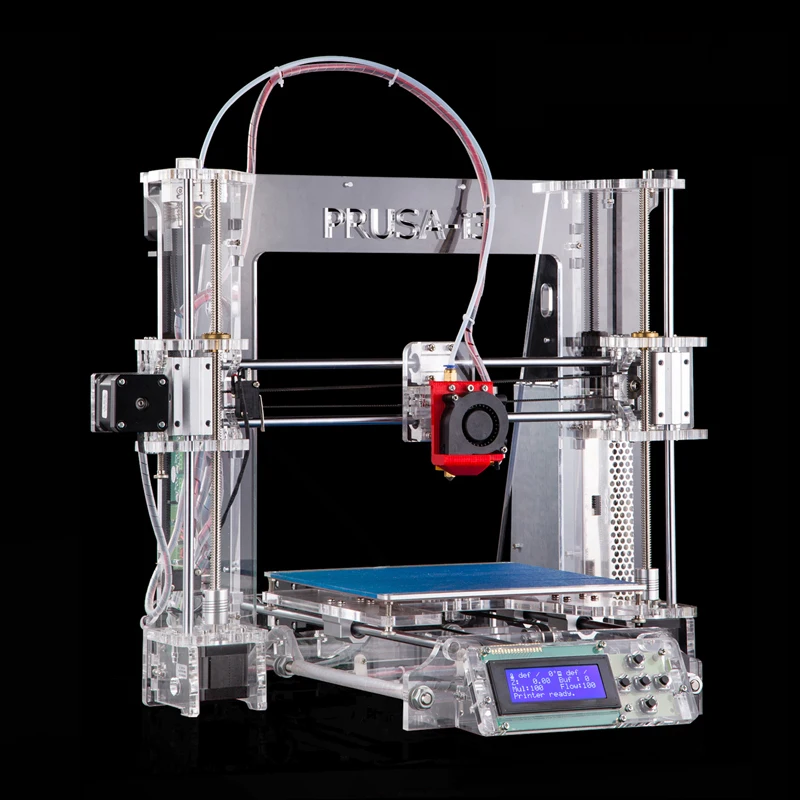
In preparation for the season, the Aprilia Racing team created a series of PLA gearbox prototypes on the Sharebot QXXL 3D printer. By simulating various adapters and reducers, the sports division technicians were able to test different volumes on the test rig, starting with just the air intake.
This approach made it possible to determine the optimal air intake geometry without the need to pre-mould and exfoliate the CFRP, thus saving time and money. The printed reducer can be tested on the bench, simply replacing one model with another, without removing the air intake each time. After determining the optimal geometry, one final mold was made to create the air intake.
Results
Let's summarize the 3D printing projects using Sharebot FDM printers, which allowed to optimize the design and aerodynamics of motorcycles for the MotoGp World Championship.
-
Drilling templates for front fairing: Template 3D models created directly from fairing CAD models, then 3D printed.

Learn more


